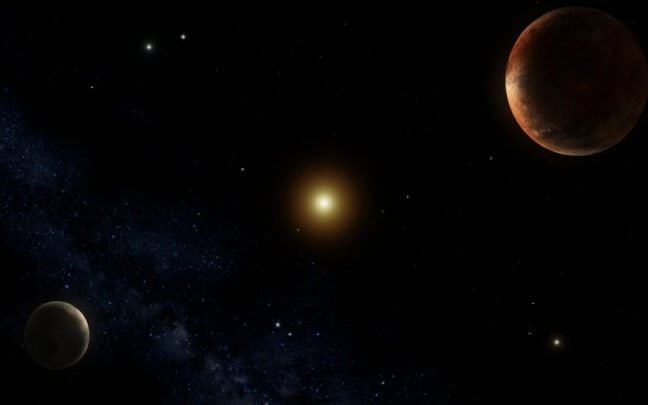A celestial body, officially designated as number 24604 (1973 SP4) in the international catalog, can be found in the asteroid belt situated between the planets Mars and Jupiter. This particular celestial body has been given the name Vasilermakov, after Archpriest Vasily Ermakov, who hails from the Orel region in Russia.
The Russian Academy of Sciences has presented a certificate of recognition for the naming of this minor planet, which has been approved by the International Astronomical Union. The news was reported by TASS, stating that Metropolitan Anthony of Orel and Bolkhov played a role in the naming process.
It was in the year 1955 when the orbit of this minor planet, numbered 24604, was first discovered. However, the celestial body itself was not spotted until September 27, 1973, at the Crimean Astrophysical Observatory. The official registration of this discovery did not take place until 2001.
The size of the small planet in the “asteroid belt” is 7 kilometers, which is larger than the town of Bolkhov itself.
Yermakov served as the rector of the Church of St. Seraphim of Sarov located at the Seraphimov Cemetery in St. Petersburg. He played a key role in the efforts to restore numerous churches in the Orel region.
The bishop has faced a considerable amount of trolling.
Over the bay in Cape Cod, Massachusetts, the Milky Way emerges.
Imagine using a time machine to journey one billion years ahead – what wonders would you witness?
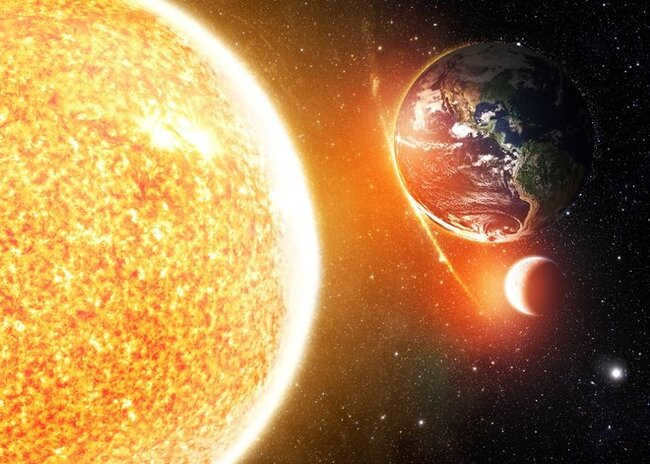
An artistic depiction of the Earth’s demise
In a billion years from now, our solar system will have undergone significant changes. Saturn, for instance, will have shed its rings as they eventually dissipate into its atmosphere. We are fortunate to be living in a time where we can marvel at the stunning sight of Saturn with all its grandeur.
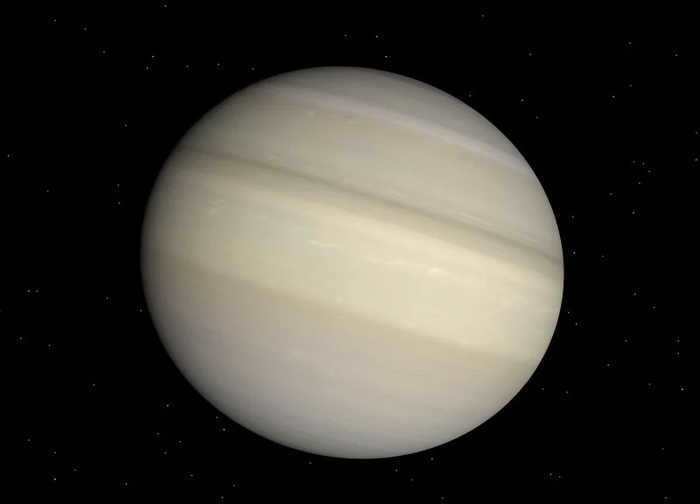
An image depicting Saturn devoid of its characteristic ring system.
In a billion years, the planet Mars will possess its own set of rings. Over time, Mars’ moon Phobos is gradually descending towards the Martian surface. Eventually, the planet’s tidal forces will cause the moon’s destruction. Experts predict that this event will occur within the next 40-50 million years.
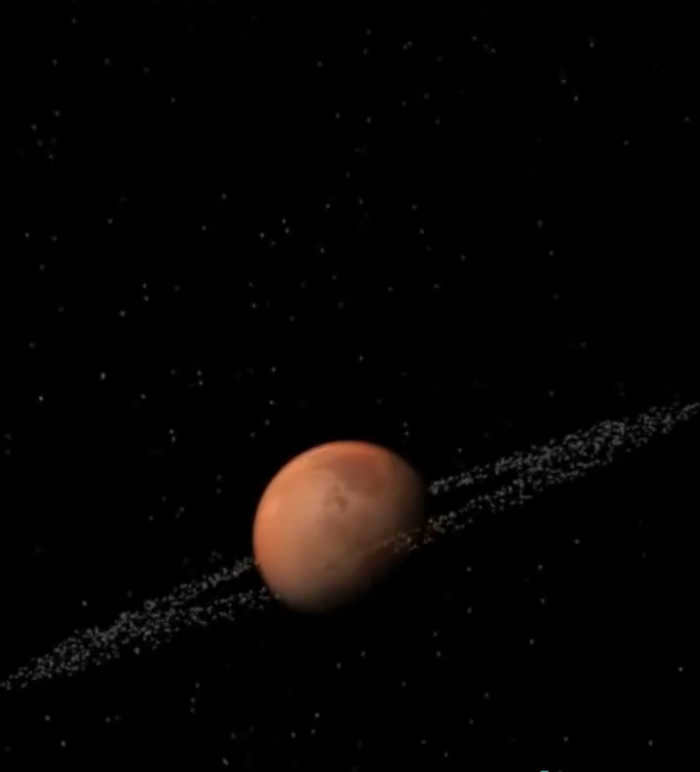
Throughout its existence, our small planet Mercury has always been the nearest to the Sun. However, despite its close proximity and surface temperature reaching over 400°C, Mercury is still able to maintain ice in the shaded areas of its poles. The aging Sun will eventually evaporate this ice, leading to the eventual demise of the entire planet.
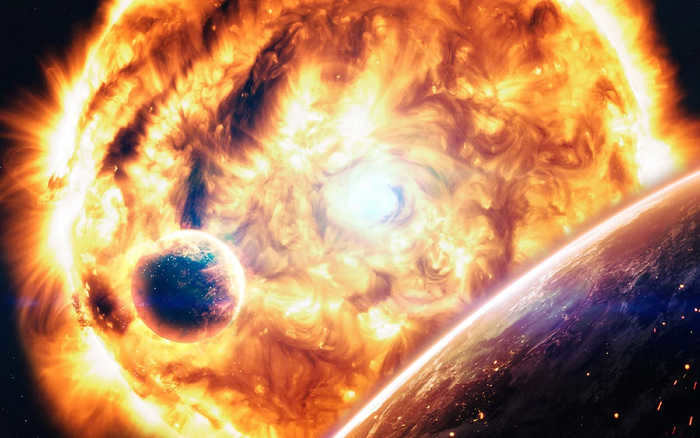

Venus, known as the “Sister Earth,” shares similarities in size, mass, and composition with our own planet. However, its surface is vastly different, with a monstrous landscape and a dense atmosphere that creates a potent greenhouse effect. As a result, the surface temperature reaches a scorching 467°C. Unfortunately, in a billion years, Venus will no longer exist. The expanding sun will consume its atmosphere, leading to the planet’s ultimate demise. The same fate awaits Mercury as well.
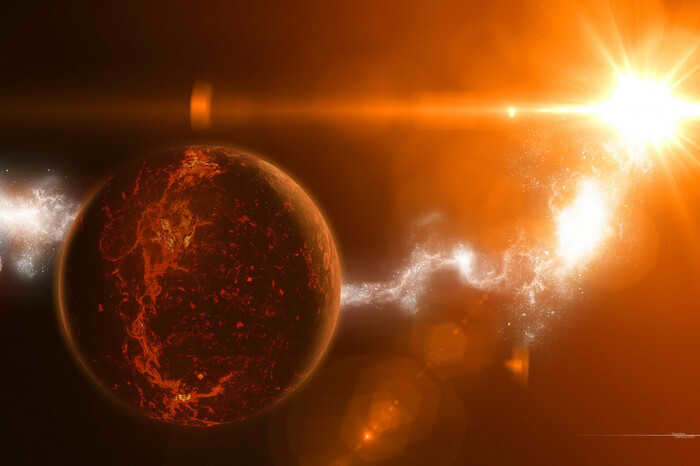
However, what lies in store for our planet? It is conceivable that life on Earth could face annihilation from a massive celestial object, a phenomenon that occurs approximately once every 100 million years. Alternatively, due to the idiosyncrasies of stellar evolution, the Earth/Moon system may be propelled outward following the demise of Mercury and Venus, thus potentially sparing us the fate of our inner neighbors. Another possibility is that the Sun will undergo such a significant expansion that solar radiation will become unbearably intense and extreme.
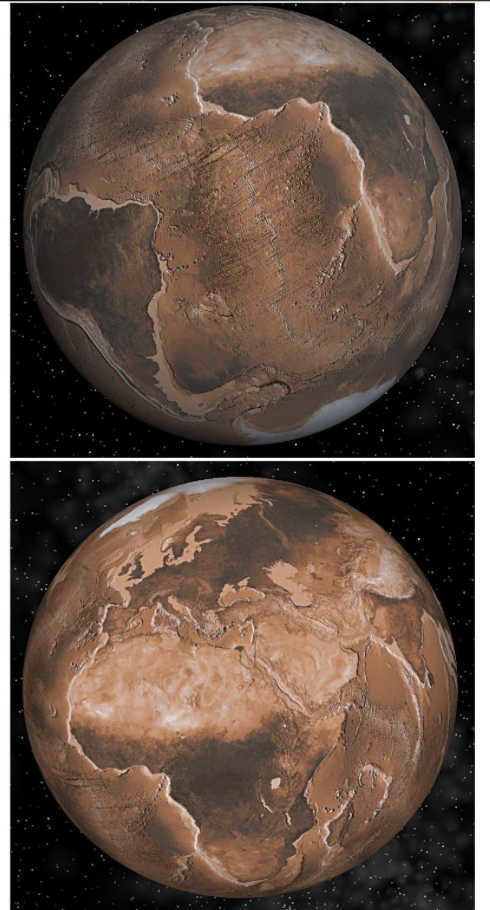
In an artistic illustration, the Earth is depicted as dried-up.
As we travel one billion years into the future, the Andromeda galaxy, which is the nearest large galaxy, will be approaching us at a speed of 120 kilometers per second. It will become so close that its luminosity in the night sky will be comparable to several moons (shown in the second frame in the image above).
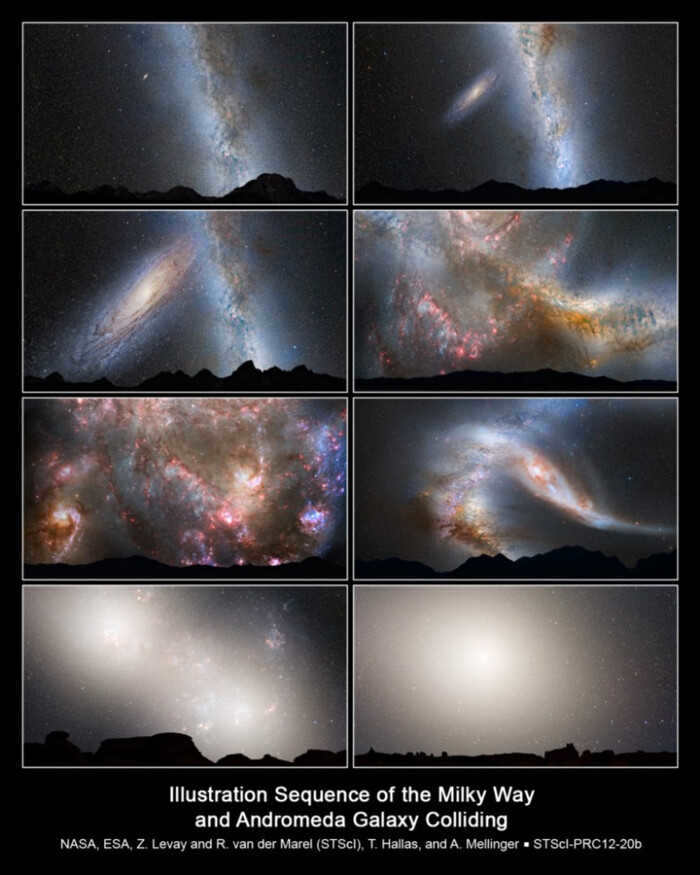

In approximately 3-5 billion years, the Andromeda galaxy will merge with our own Milky Way, resulting in a profound transformation of the structure of our galaxy and the nocturnal heavens. Currently situated 2.5 million light-years away, based on the most reliable simulations, the initial collision and subsequent explosive star formation (as depicted in frame 4 of the image above) will occur in 3.8 billion years – coinciding with the “second Universal Year”. This cosmic event will conclude after 5.5 billion years have passed.
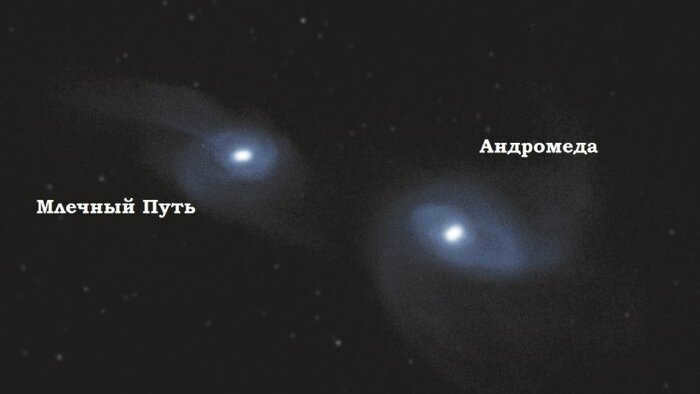

Due to the forces of gravity, our local group of galaxies will eventually merge with us, creating a spectacle of cosmic proportions. However, the influence of dark energy will cause all other galaxies and clusters, which are currently unrelated to us, to move away from us and eventually be beyond our reach in the observable part of the Universe. This process will unfold over billions or even hundreds of billions of years, showcasing the ever-changing nature of our cosmic neighborhood.
As the Sun enters its red giant phase, the dynamics of our solar system will change dramatically. Pluto and its moon Charon, along with numerous icy objects in the Kuiper Belt, could potentially find themselves in the habitable zone of our solar system. This means that they could have acceptable temperatures for the existence of life as we know it. Additionally, Triton, a satellite of Neptune, may also find itself in this habitable zone, opening up new possibilities for the exploration of extraterrestrial life.
Today, we are aware that these celestial bodies contain abundant amounts of water ice, along with a diverse range of organic compounds. Remarkably, some of these bodies may even harbor vast oceans beneath their icy exteriors. The only drawback is that the temperatures plummet to a bone-chilling minus 200 degrees Celsius. Nonetheless, as the Sun’s warming rays gradually permeate these frigid regions, the temperatures will eventually rise to match those experienced on Earth.
It is truly difficult to fathom the potential implications for our civilization in the coming years. Nevertheless, the transformations that will unfold in our corner of the universe promise to be utterly awe-inspiring for all of humanity. With any luck, if we were to possess a time machine, it would provide us with the ability to journey back to our peaceful era.

The transformations of Mars during the occurrence of dust storms.

A breathtaking view of the Lebanon Mountains at sunset, adorned by the presence of the Moon, Venus, and Jupiter.
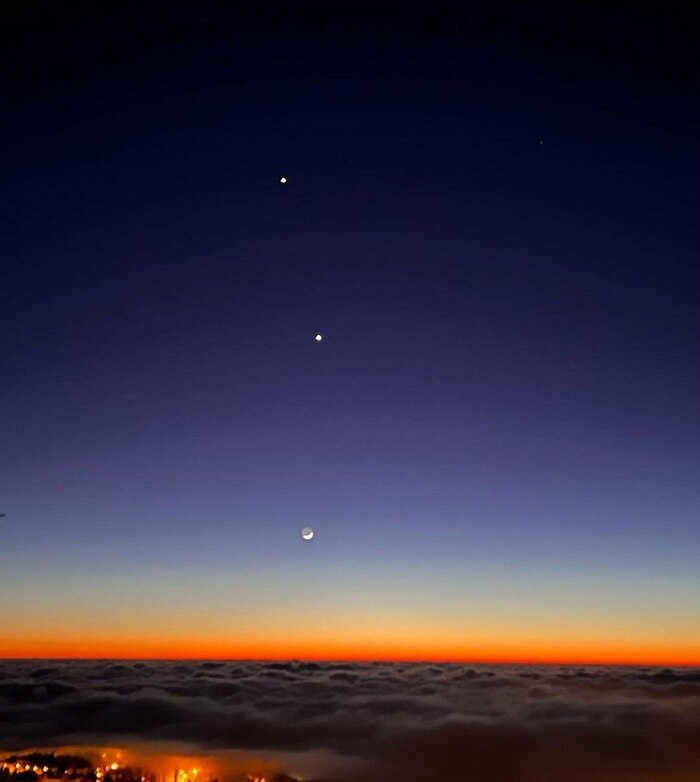
A brilliant meteor originating from the Northern Taurids stream.
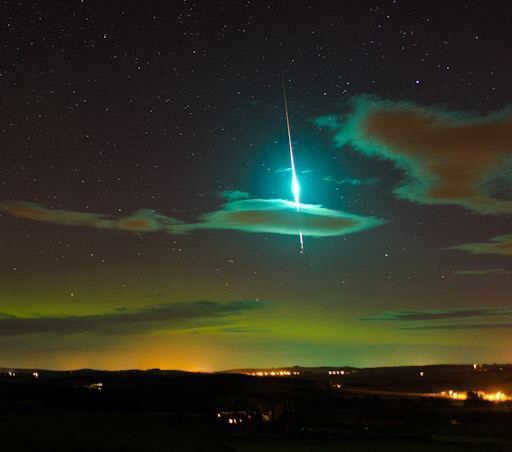
The Taurids are a yearly meteor shower that can be seen from September to December (you can find them in the Taurus constellation).
The Taurids are connected to Comet Encke and represent the previous separation of meteor particles from the comet, whose orbits have changed over time and now intersect with the Earth’s orbit.
Signs of a Catastrophe on Mars. However, Two Pieces of Evidence Suggest Mars is Still Thriving.
Based on the imagery captured by Mars’ automated interplanetary stations and rovers, it is evident that a significant catastrophe took place on the planet, resulting in the extinction of all life. Nevertheless, the presence of water features, such as riverbeds and evidence of massive floods, indicates that Mars was once a thriving habitat. Additionally, the landscape itself bears the unmistakable marks of water erosion.
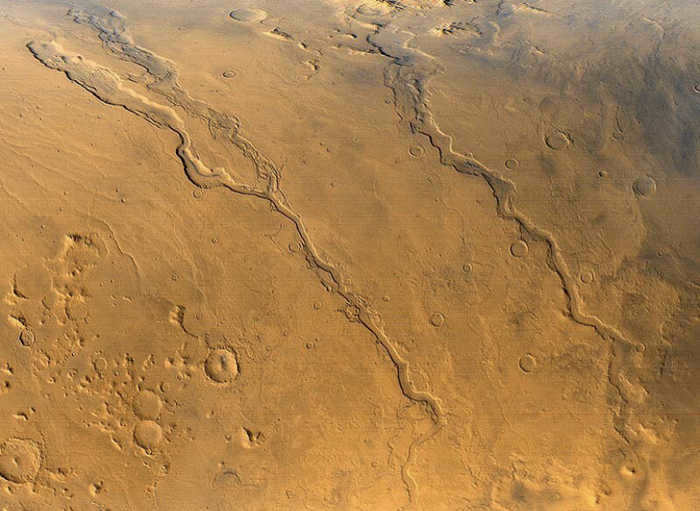
There is evidence of a water stream that stretches for approximately 100 kilometers.
It is possible that these formations are not actually rivers, but rather highly eroded faults or streams originating from mud volcanoes. However, more information on this topic will be discussed below.
The most evident indication of past events
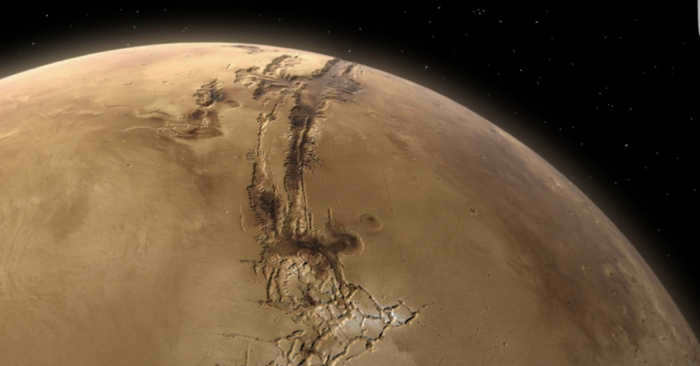
The enormous Mariner Valley fault is present on Mars.
The Mariner Valley fault spans a length of 4,500 kilometers and reaches depths of up to 11 kilometers. To the west of the fault lies the Tharsis region, home to five massive volcanoes, including the Olympus volcano, the tallest of them all.
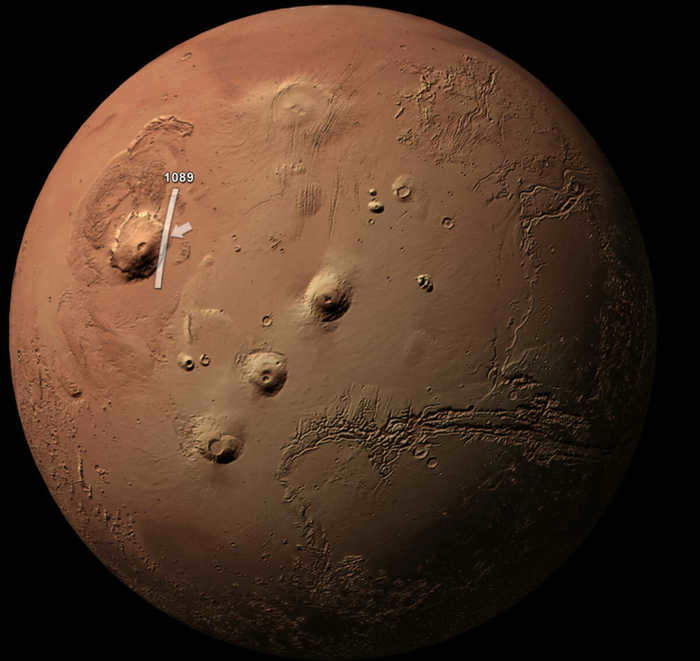
There are three volcanoes arranged in a line (similar to the Hawaiian Islands on Earth): Mount Askrias (in the north), Mount Peacock, and Mount Arsia (in the south). Their heights range from 14 to 18 kilometers. In the northeast of Olympus, there is a vast (shield) volcano called Alba (which is only 1.5 km high above the plateau, but its mass spreads up to 1300 km in diameter). Instead of spreading magma (due to its high viscosity), it is possible that it is a mud volcano and that it was spreading mud flows. The cone itself is not black like basalt.
The elevation of Mount Olympus is 26 kilometers, making it the tallest volcano on Mars. In addition to Mount Olympus, there are a total of 20 volcanoes on the planet. Among these, five are massive shield volcanoes that have a wide base diameter.
These volcanoes are situated in the Tharsis and Forcida provinces of Mars, which are known for their elevated terrain compared to the rest of the planet’s surface.
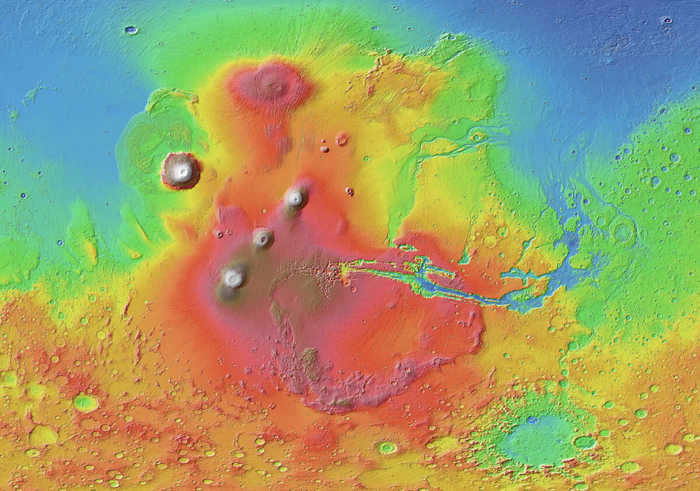
Elevation map of this hemisphere of Mars. Traces of some form of streams that once flowed down from the Tharsis Province can be observed. These mountains are potentially mud volcanoes, while the Tharsis Plateau consists of sediment from mud outcrops. The masses were deposited and the water flowed downward, resulting in a massive Martian flood.
If the internal structure of terrestrial planets is similar, then a similar phenomenon may have occurred on Earth. Traces of volcanoes are abundant.
The Olympus volcano has steep slopes up to 7 km high at its base. If it emitted lava or mud flows, it wouldn’t have left such steep slopes, as the masses would have flowed away. Scientists have not yet reached a definitive conclusion on this matter.
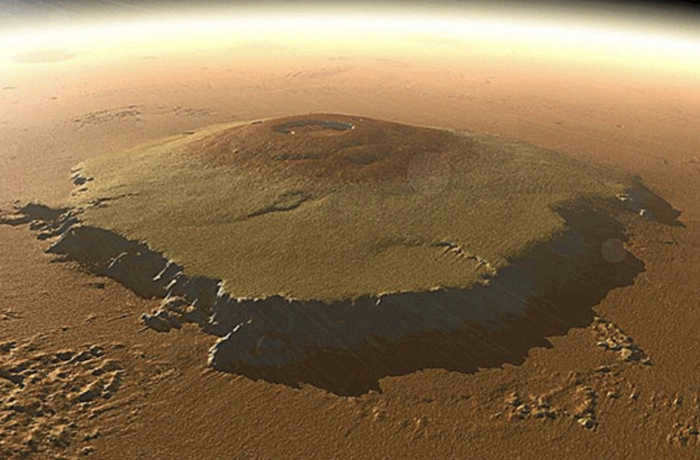
However, it is assumed that the volcano has eroded into the ocean, causing the water to flow up its slopes and create these steep cliffs. Alternatively, it is possible that the streams originating from the Tharsis province have washed up against the base of Olympus Mons. It is important to note that this activity occurred during a period when the volcano was not erupting.
In 2020, a study was published suggesting that the water channels on Mars are actually formed by streams from mud volcanoes. This finding seems to support the mud hypothesis. Curiously, scientists are reluctant to apply this same reasoning to Earth.
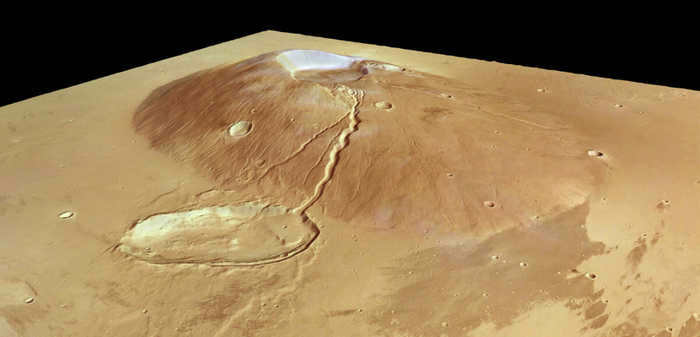

Currently, there is no evidence of large-scale volcanic activity on Mars, and it is believed that the planet has lost a significant amount of its atmosphere, leading to the evaporation of water. Moreover, there are no apparent signs of life on Mars. However, certain facts suggest that certain processes are still ongoing.
Photographs taken by the AMS, a spacecraft that has studied the Martian surface, reveal the presence of plumes emanating from Martian volcanoes. It is unclear whether these plumes are comprised of clouds or ash resulting from volcanic eruptions.
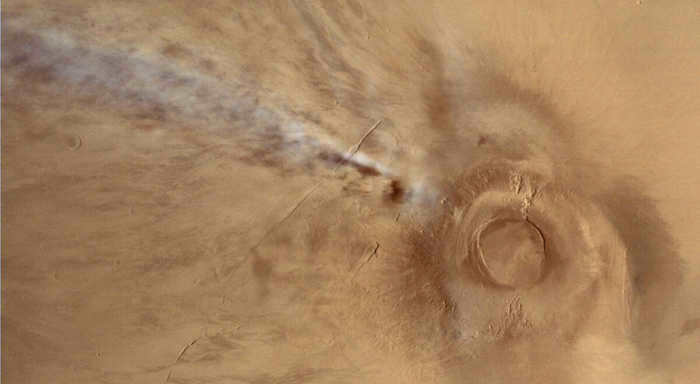
A plume originating from the Arsia volcano was first observed by the AMS Mars Express in 2018. Interestingly, similar formations had been recorded by the station in 2009, 2012, and 2015. These formations are believed to be cloud formations, as they consistently appear before the onset of Martian winter in this region.
These clouds are comprised of water vapor, with the Arsia volcano being the likely source. It is speculated that the release of hot gas from the volcano leads to the condensation of water vapor, resulting in the formation of these clouds. Additionally, the sheer size of this plume is noteworthy, stretching for a staggering thousand kilometers. In the year 2020, clouds once again made an appearance above the volcanoes:
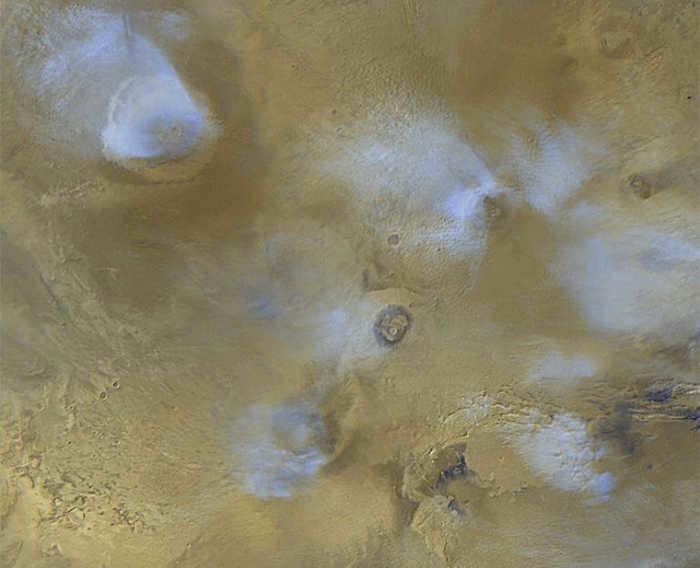
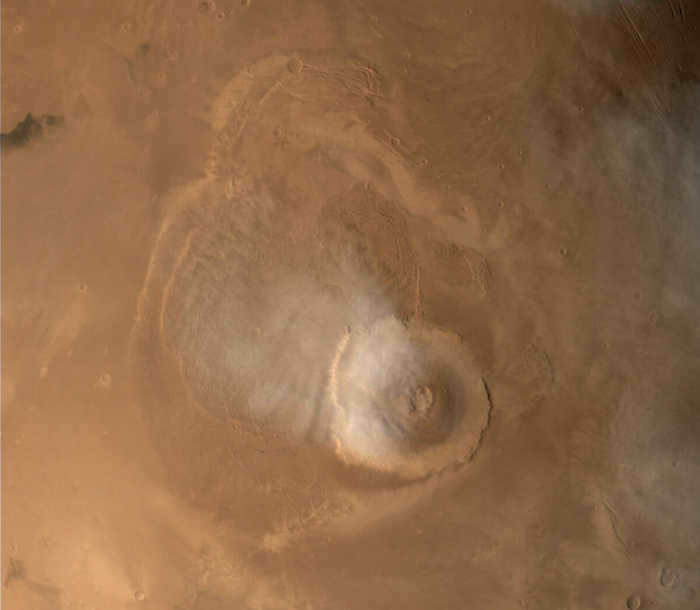
Scientists have determined that clouds form simultaneously approximately once every 687 days.
By way of comparison, here is a video of a volcanic eruption on Earth as seen from space:
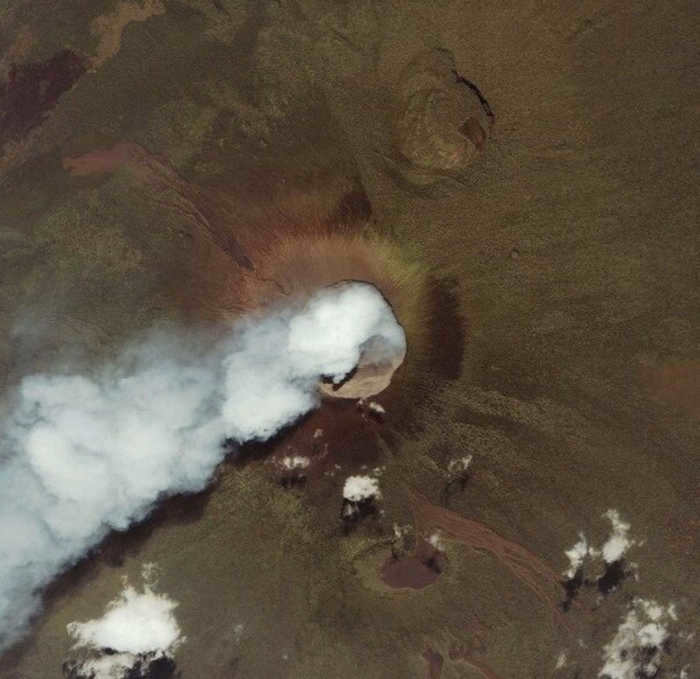
In addition to vapor, this volcano also emits ash, resembling clouds.
Moreover, the Arsia volcano is intriguing due to the presence of caves discovered on its slopes:
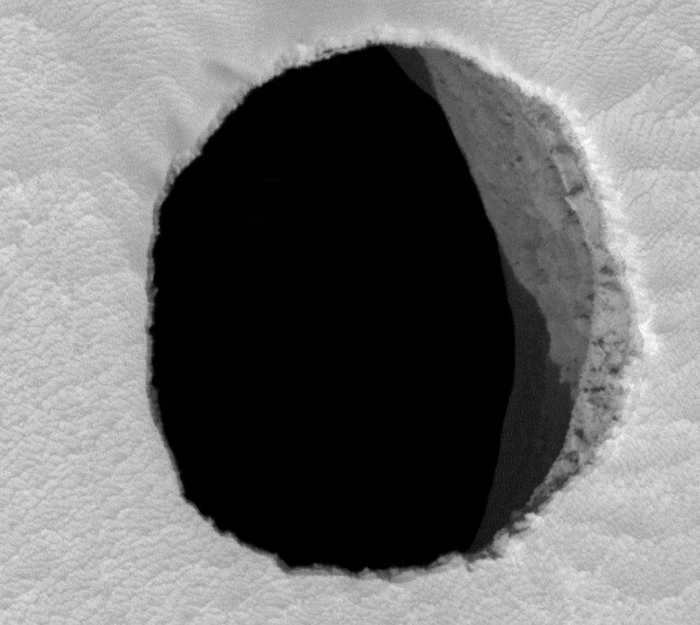
The collapse of the vaults in one of the caves is a phenomenon that can also be observed on Earth. These collapses are typically associated with the emergence of geothermal water. As the pressure from the underground masses decreases, caves are formed.
Another interesting fact that suggests ongoing processes and degassing in the depths of Mars is the recorded increase in oxygen concentration by the Curiosity rover in 2019.
Mars’ atmosphere is primarily composed of carbon dioxide (CO2), with nitrogen (N2), argon (Ar), oxygen (O2), and carbon monoxide (CO) making up smaller percentages. However, during the rover’s exploration near Gale Crater, significant fluctuations in gas content have been detected.
The gas composition analyzer has revealed that the oxygen concentration increases by 30% during spring and remains at this level until Martian autumn, after which it decreases and returns to its original values. A similar peculiar pattern is observed with methane – its typical concentration in Gale Crater accounts for 0.00000004% of the total volume, but during the summer months, it experiences a significant rise of 60%.
This phenomenon bears resemblance to the possibility of some form of biological life initiating the production of oxygen and methane during springtime, only to hibernate during the colder autumn months. Unfortunately, the Mars rover lacks the necessary instrumentation for analyzing and detecting organic compounds, thus making it unable to confirm this hypothesis.
Another possible explanation is that the ground is undergoing a thawing process, which releases the CO2 that was trapped in the form of ice. This could cause the gases that were present when Mars had a dense atmosphere to escape from the ground, resulting in an increase in their concentration above the surface.
Naturally, we would prefer to believe in the first scenario, which suggests that there may still be some form of life on Mars, even if it is in the form of bacteria or microscopic organisms like algae or lichens that are capable of producing oxygen. If the atmosphere were to return to Mars, it could potentially revive portions of the biosphere.
Enjoyed reading this article? Then check out my Telegram channel all about space (Space is Nearby), where all the latest space news and discoveries are shared. Plus, there will soon be a space poster giveaway!

Presented here is an infrared depiction of Jupiter’s southern pole
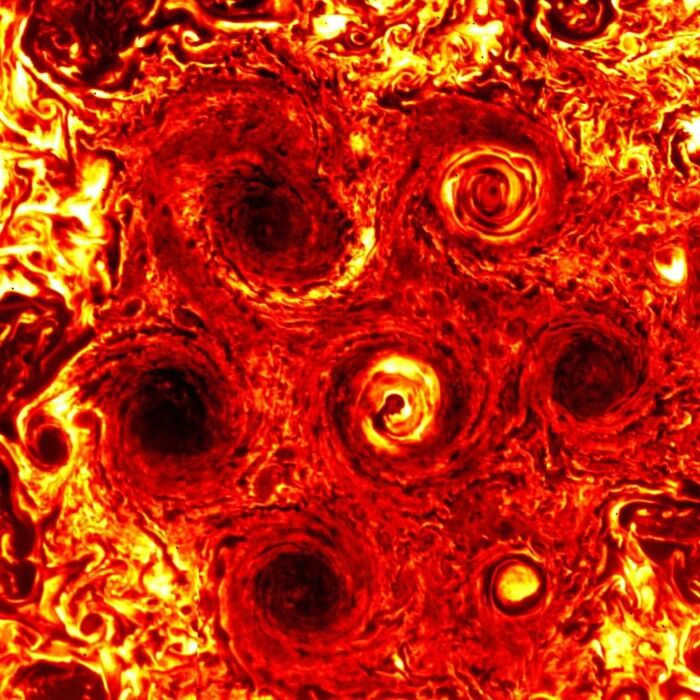
On November 4, 2019, NASA’s Juno spacecraft captured this photo.
The picture displays a central cyclone, encircled by six additional cyclones.
Notably, the youngest and tiniest cyclone is situated in the lower right corner of the image.
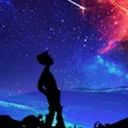
On August 8, 2023, at 09:24 pm, Venus will be visible in the sky.
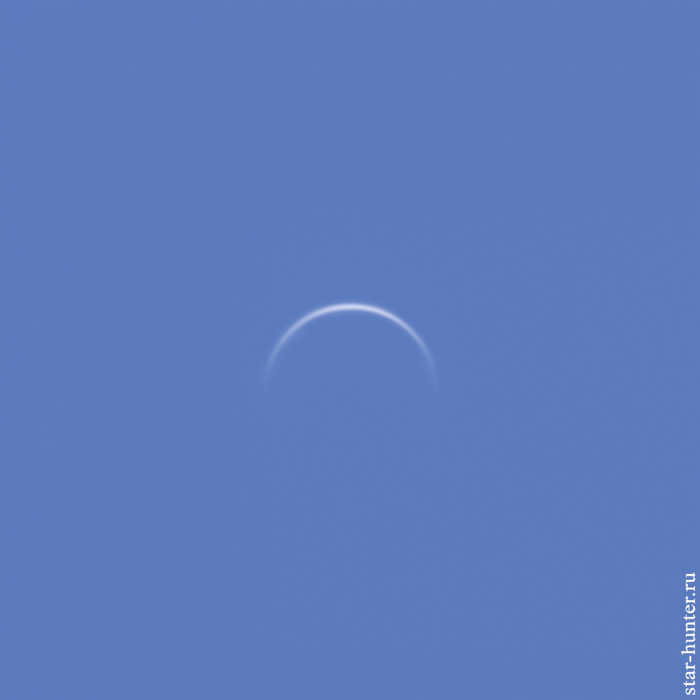
The following equipment was used for capturing the image:
-Levenhuk Ra R66 ED Doublet Black telescope
-Sky-Watcher AZ-GTi mount
-NPZ PAG 3-5x Barlow lensblock
-ZWO ADC atmospheric dispersion corrector
-ZWO IR-cut light filter
-ZWO 183MC astrocamera.
The photo was taken at the Caucasus Mountain Observatory, Moscow State University, Karachay-Cherkess Republic.

Response to the post “The surface of Mars, filmed by the Curiosity rover”
Are you trying to deceive us? This is indeed the surface of Mars.
CYBER VILLAGE // TEASER // COMING SOON
The orbital paths of the planets in our solar system
A sophisticated portrayal of the physical world.
The vanishing satellites of the solar system.
Humans have a tendency to misplace items frequently, be it keys, glasses, or money. It is not common to suspect gigantic celestial bodies of experiencing a similar phenomenon. For millennia, mankind has been observing these objects and has yet to observe anything of the sort. However, several pieces of evidence suggest that certain planets in the solar system have, at some point, lost satellites orbiting around them.
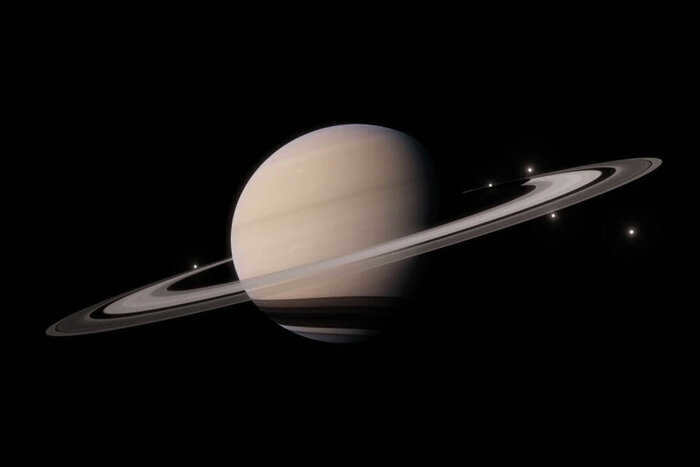
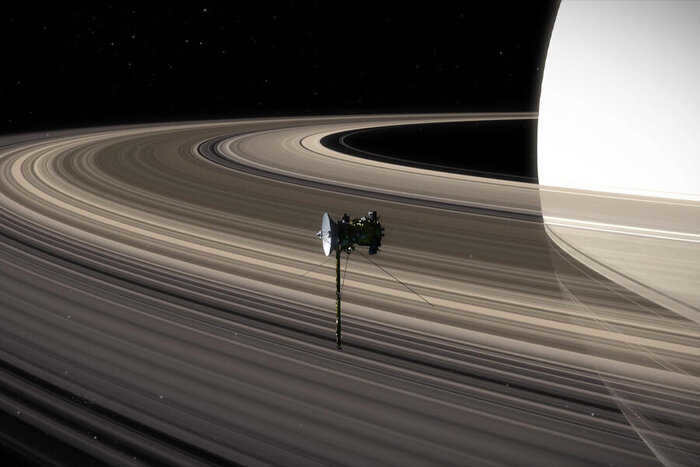
An artist’s depiction of the rings of Saturn as the Cassini interplanetary station glides above them.
The rings of Saturn, mostly composed of ice, are expected to gradually fade over time and accumulate more and more dust. This phenomenon suggests that the heavier the material on the rings, the older they are. Data gathered from the Cassini mission has revealed that the rings are relatively young, estimated to be only a few tens of millions of years old. This raises the question of why they formed so late. In 2022, a team of astronomers proposed a theory that suggests the rings are the remnants of a former Saturnian moon that ventured too close to the planet and was torn apart into countless tiny fragments.
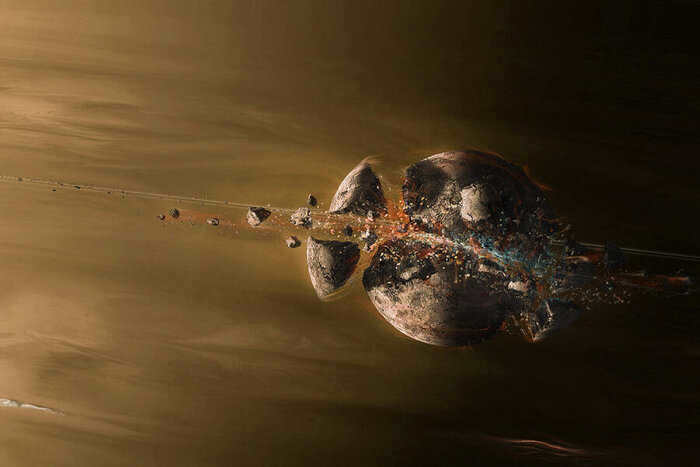
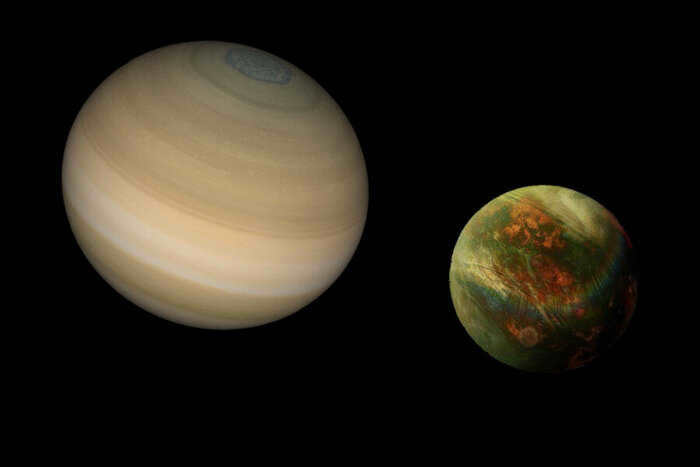
Saturn, viewed without its rings, and the hypothetical satellite Chrysalis
Let’s shift our focus closer to the Sun and discuss Jupiter. This colossal planet seems to have lost a significant number of its satellites over time. Presently, there are 95 known satellites, but billions of years ago, the number was even greater. If we consider the one near Saturn that collapsed dramatically, it’s likely that Jupiter absorbed these satellites. By utilizing computer simulations to reconstruct the early history of our solar system, astronomers have deduced this unfortunate outcome. The simulation incorporates an approximation of the amount of matter required to form Jupiter and its present satellites, which include the Galilean moons Ganymede, Callisto, Io, and Europa. These four moons alone account for over 99% of the mass that orbits this gas giant.
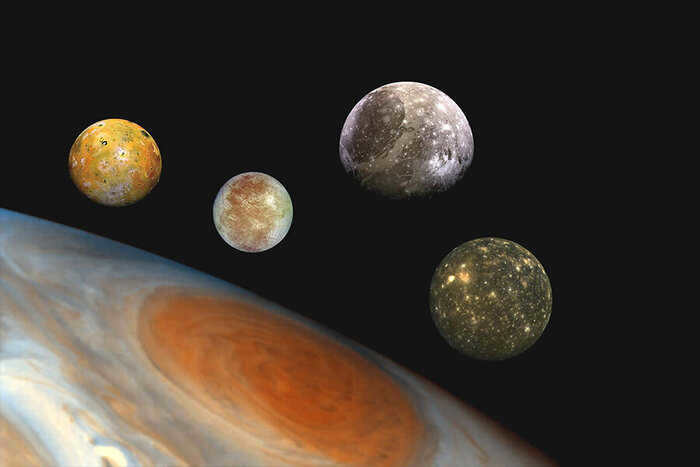
The outcome of the digital experiment yielded an unexpected result. It transpired that there was an ample amount of matter available at that time to potentially form at least four additional complete sets of “Galilean moons” in close proximity to Jupiter. It is evident that computer simulations are not entirely infallible, particularly when considering events that occurred billions of years ago. Nevertheless, certain experts propose that these satellites could plausibly have originated during that distant era, and have even postulated the factors that precipitated their disappearance.
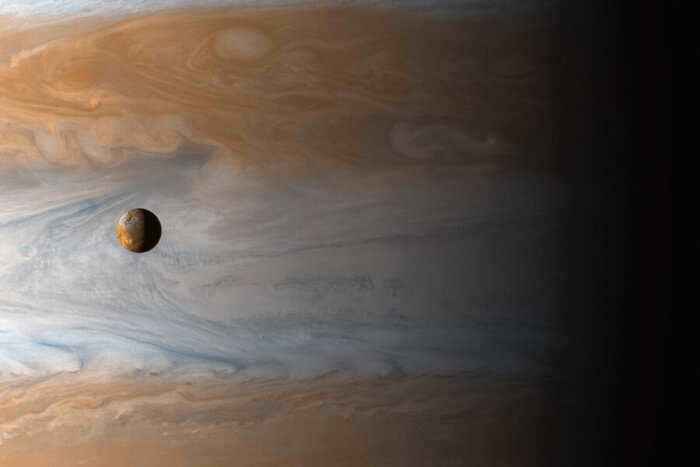
The observation of Jupiter’s moon Io by the Cassini spacecraft
Scientists have theorized that these celestial bodies were destroyed due to excessive consumption. They had an abundance of building material, which caused them to become excessively massive. As a result, they lost momentum and eventually succumbed to the gravitational pull of the enormous planet. Eventually, they would spiral into their demise and be devoured by Jupiter. This process unfolded over millions of years during the planet’s formation, and numerous satellites may have perished during this time. According to this hypothesis, the Galilean moons are the last survivors, as they lacked sufficient material to reach a critical mass.
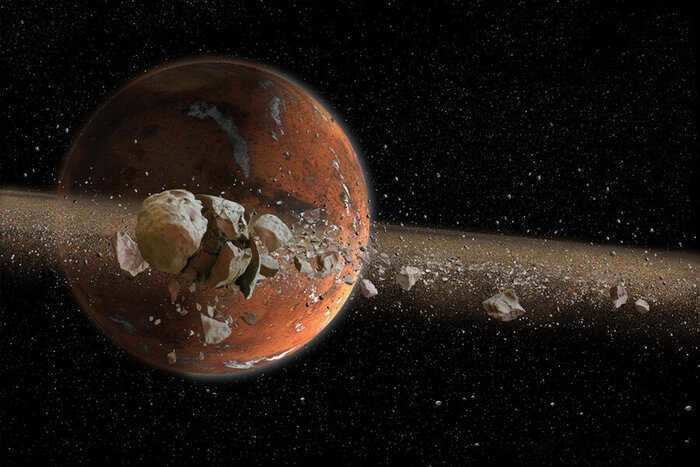
In 2021, a scientific team put forward a hypothesis suggesting that Mars had once captured a single asteroid measuring approximately 30 kilometers in diameter between 1 and 2.7 billion years ago. This captured asteroid eventually broke apart, giving rise to the moons Phobos and Deimos. However, a year later, other scientists criticized this publication, as they conducted computer simulations and discovered significant flaws in the proposed scenario. According to their calculations, if Phobos and Deimos had formed from the breakup of a larger object, they would have rapidly collided with each other, resulting in a much larger amount of debris.
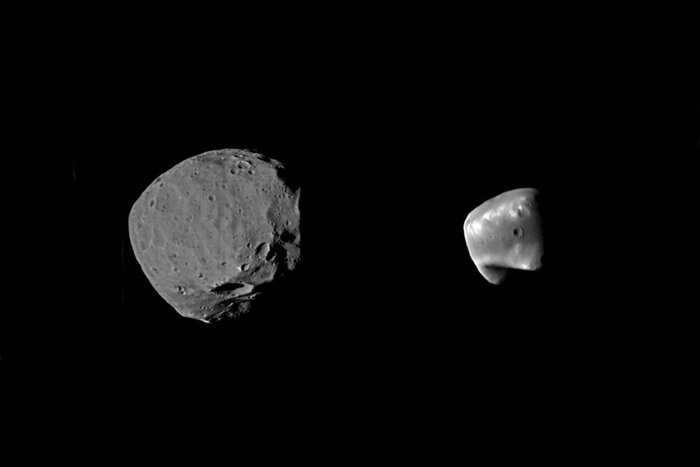
The article concludes here. What comes next are my thoughts on Picaboo (and more).
Hey there, I recently signed up for Picaboo and had very little knowledge about this community. To my surprise, my posts started gaining a significant number of views right from the beginning. Even more exciting, my article was featured in the official Picaboo group on Vkontakte. The engagement from readers has been amazing as well. You all generously shower me with “likes” and actively comment on my posts. I sincerely appreciate it!
I plan to increase my activity on my Peekaboo page and gradually make it my main platform. The reason for this is because I have been building my channel on Zen for almost three years. Although I have over 50,000 subscribers there, the “wonderful” recommendation system only allows my articles to receive 100-150 reads. Additionally, since August of this year, Zen changed their monetization system, resulting in a daily income drop to 200 rubles for my channel. I believe there is no longer anything for me to do on this platform. If you have an interest in space and everything related to it, I invite you to join our group on Peekaboo. There, you will find a lot more interesting and informative content!
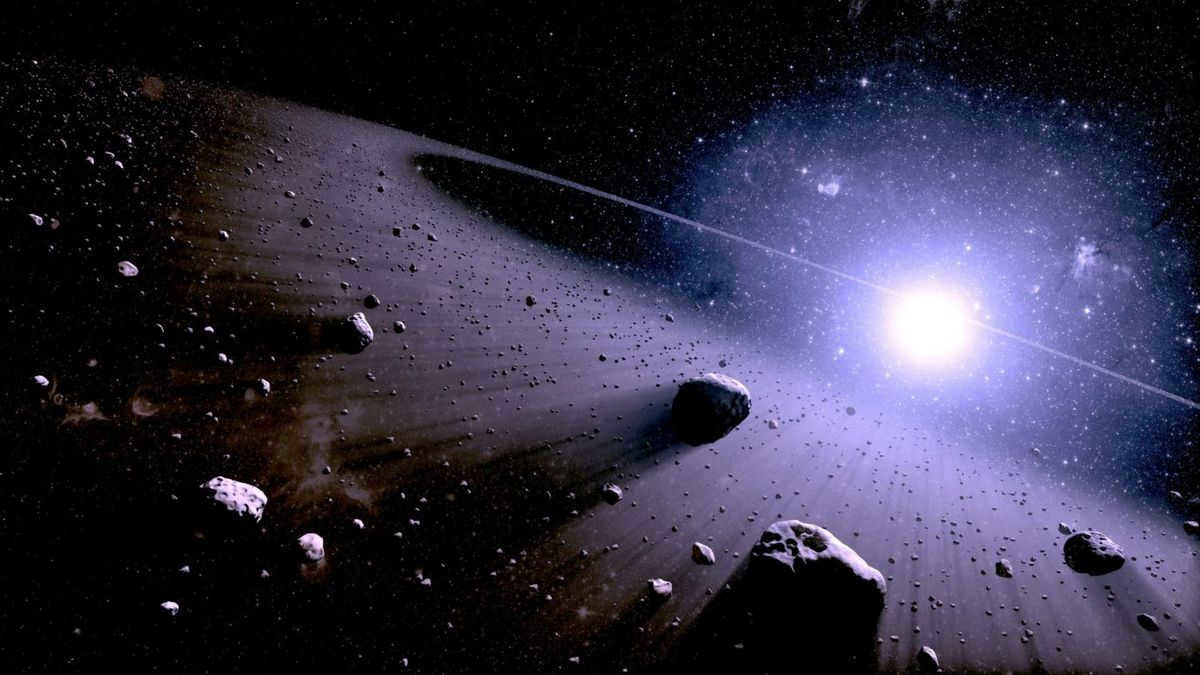
There are numerous enigmatic entities lurking within the confines of our solar system. Among them resides an asteroid cluster positioned betwixt Mars and Jupiter. These celestial bodies, for the most part, exhibit irregular shapes and modest proportions. They traverse their designated orbits, occasionally intersecting and colliding with one another. This conglomerate is commonly referred to as the Principal Asteroid Belt of our Solar System.
Until recently, it was believed that there existed a planet called Phaethon between Mars and Jupiter. According to this theory, Phaethon was destroyed when it collided with an unknown celestial body, and the asteroids in the Main Belt are the remnants of this planet. However, this theory has not been confirmed. The gravity of Jupiter during the planet’s formation would have prevented Phaethon from forming.
The total mass of all the asteroids in the belt is estimated to be 3*1021 kg or 3400 quadrillion tons, which is only 4% of the mass of the Moon. This means that there is not enough material to form a planet of substantial mass. Additionally, the gravitational influence of Jupiter would hinder the formation process.
There are numerous objects in the main belt, with a total number exceeding one million. However, the density of asteroids in this region is relatively low, at approximately one object per six thousand kilometers. As a result, the likelihood of colliding with them is minimal, even when entering the belt’s orbit.
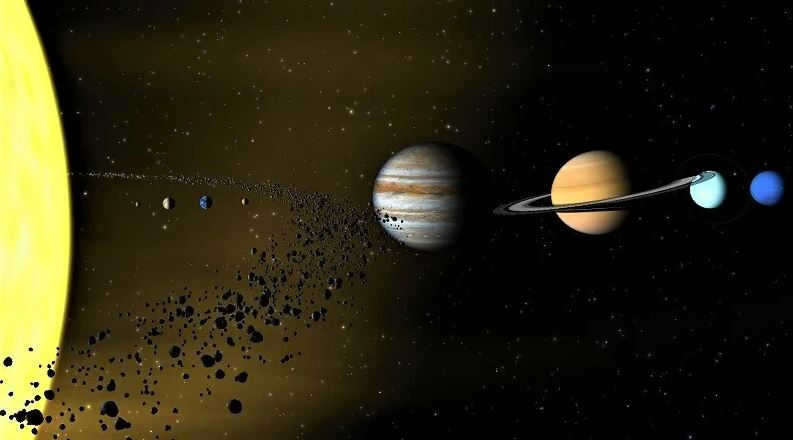
The biggest celestial objects revolving around the belt have a diameter of no more than 1000 km. The primary belt does not have any distinct limits and is spread out at distances ranging from 2.06 a.u. to 3.27 a.u. from the Sun.
An astronomical unit (abbreviated as a.u.) represents the distance from the Sun to the Earth and is approximately equal to 149,597,870,700 m or 149.6 km.
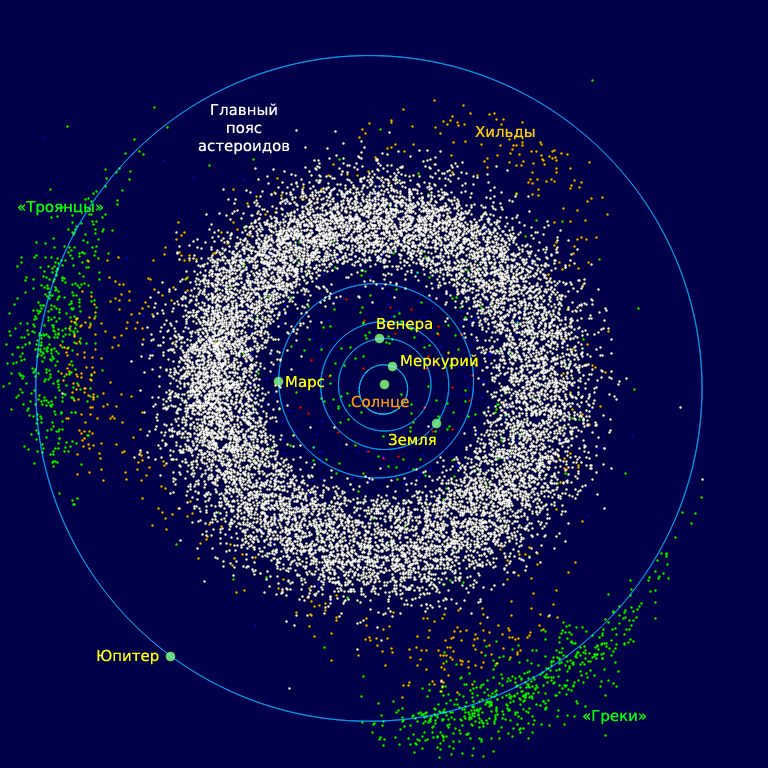
In 1766, Johann Titius, a German scientist, made a remarkable calculation that revealed a correlation between the distance from the Earth to the Sun and the positions of other planets in our solar system. Regrettably, his groundbreaking findings were initially met with laughter and skepticism.
However, in 1772, another German astronomer named Johann Bode took notice of Titius’ theory. He meticulously examined his predecessor’s calculations and successfully demonstrated the validity of the hypothesis.
Subsequently, the accuracy of the orbital data was fully substantiated. According to the Titius-Bode theory, there ought to be a planet situated between Mars and Jupiter.
Furthermore, on January 1, 1801, Giuseppe Piazzi from Palermo stumbled upon a diminutive planet named Ceres within this vicinity. Its dimensions were not substantial enough to classify it as a complete planet. Subsequently, in 1802, another celestial entity known as Pallada was detected in close proximity. It was comparatively smaller than Ceres.
The term “asteroid,” which was coined in 1801, signifies something that is “star-like” (derived from the Greek words aster, meaning star, and -oeides, meaning similar).
The Kirkwood Gap
Asteroids in orbit are not distributed evenly. There are specific regions known as Kirkwood gaps where the density of objects is lower compared to other areas. These gaps can be found both on the edges of the asteroid belt and within it. The most prominent Kirkwood gaps are located at 2.5 and 2.82 astronomical units (a.u.). As a convention, the asteroid belt can be divided into an outer belt and an inner belt, with the Kirkwood Gap serving as the dividing line almost in the middle.
Unique Features of Individual Asteroids in the Main Belt
Within the cluster of asteroids, there are numerous notable celestial objects, ranging from large entities to smaller yet intriguing cosmic bodies that warrant closer examination.
Exploring Ceres
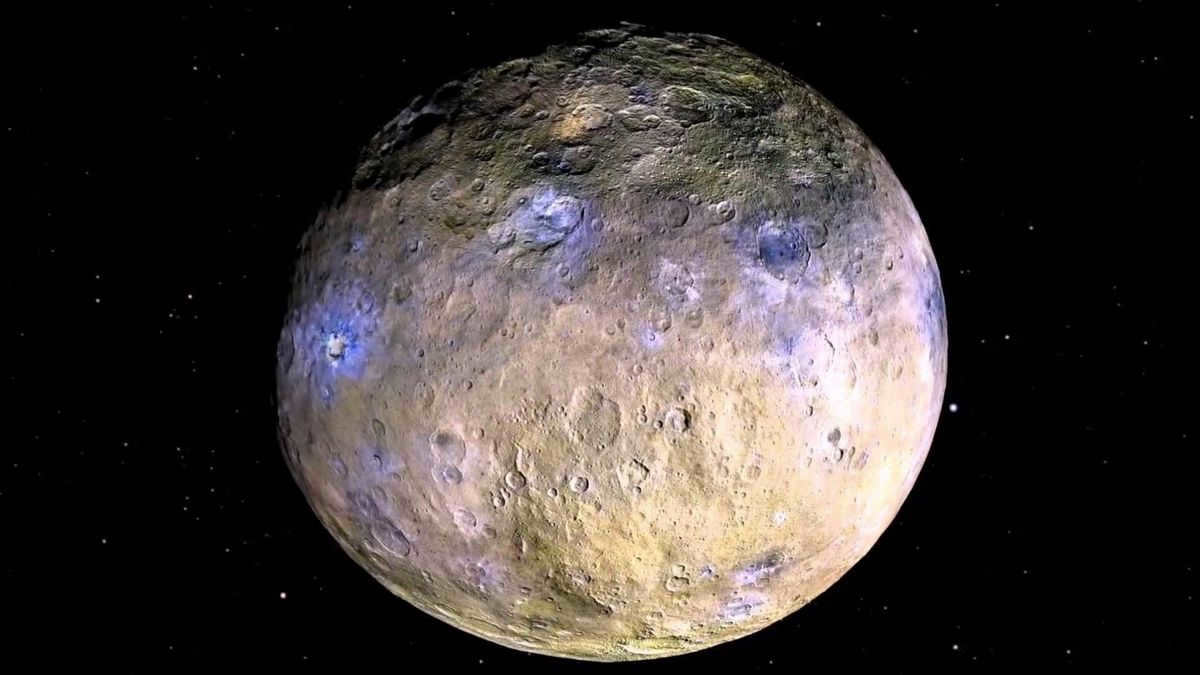
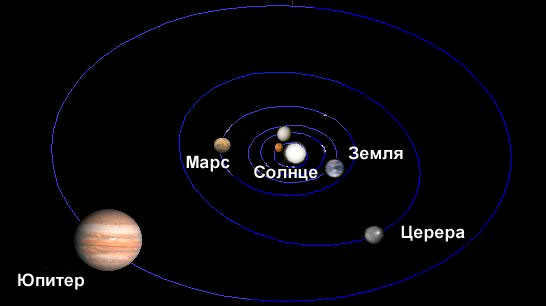
Located in the outer region of the asteroid belt, we find the largest celestial body known as Ceres, boasting an impressive diameter of 950 kilometers.
To put things into perspective, the Earth’s diameter measures 12,756 kilometers, while the Moon’s diameter is a comparatively modest 3,474 km.
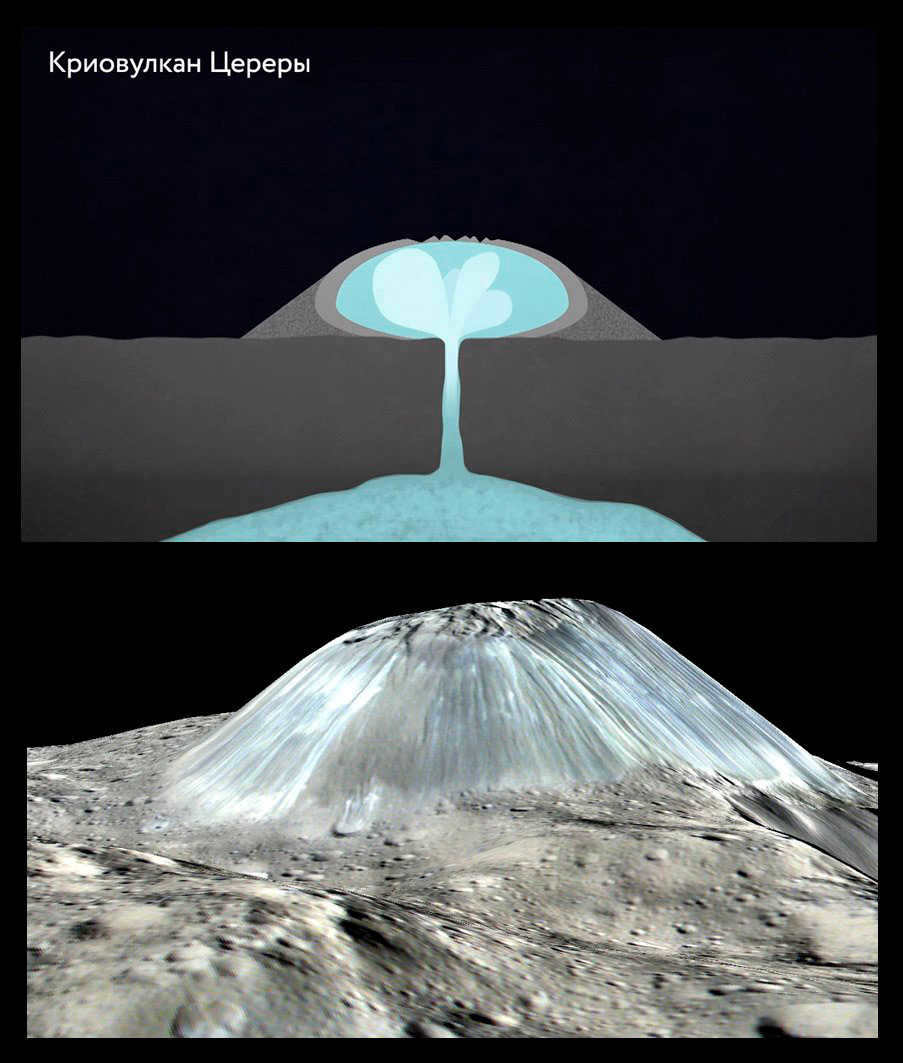
In the beginning, Ceres was believed to be a planet. However, with the discovery of smaller celestial bodies, it was reclassified as an asteroid. More recently, it has been categorized as a minor or dwarf planet.
Ceres stands out from its neighboring objects due to its spherical shape. It has a mass of 9.4*10 20 kilograms, which is equivalent to one-third of the entire asteroid belt’s mass. Nonetheless, this mass is significantly lighter than the Earth, weighing only 6,000 times less.
As it travels along an elongated path, Ceres reaches its farthest point from the Sun at 2.9 a.u. When it comes closest to the Sun, the distance decreases to 2.5 a.u. The planet’s surface is heated to a maximum temperature of -33⁰C or 239 Kelvin. However, the average temperature on Ceres is much lower, reaching -167⁰C.
Internally, Ceres is composed of a rocky core surrounded by a layer of creomantium that is 100 km thick. Almost half of the dwarf planet’s volume is filled with water ice, which makes up about 30% of its total mass.
The second largest celestial body in the asteroid belt is Vesta, which was first observed in 1807. Vesta is positioned in the inner region of the belt and has a mass of approximately 2.6*10 20 kg, making it nearly four times smaller than the largest asteroid, Ceres. Its orbit is slightly elongated, reaching a distance of 2.57 astronomical units (a.u.) at its farthest point from the Sun, known as aphelion. Conversely, at perihelion, the closest point to the Sun, Vesta’s orbit comes within 2.15 a.u. In terms of its orbital period, Vesta completes one full revolution around the Sun in approximately 3.6 Earth years.
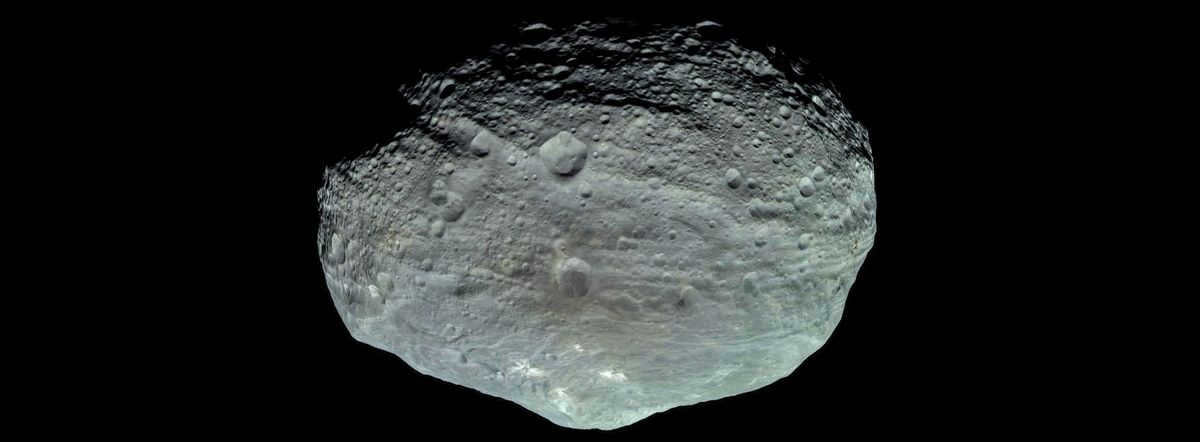

Vesta stands out among the asteroids in the belt due to its visibility to the naked eye. This is not only because of its relatively close distance to Earth, but also because it has the ability to reflect up to 40% of the light that reaches its surface. Additionally, Vesta is relatively close to Earth, with a distance of only 177 million kilometers or 1.18 astronomical units. The asteroid has a diameter of 525 km.
There is a hypothesis that Vesta has a similar internal structure to that of a planet. It is believed to have a core composed of nickel and iron at its center, surrounded by a rocky mantle.
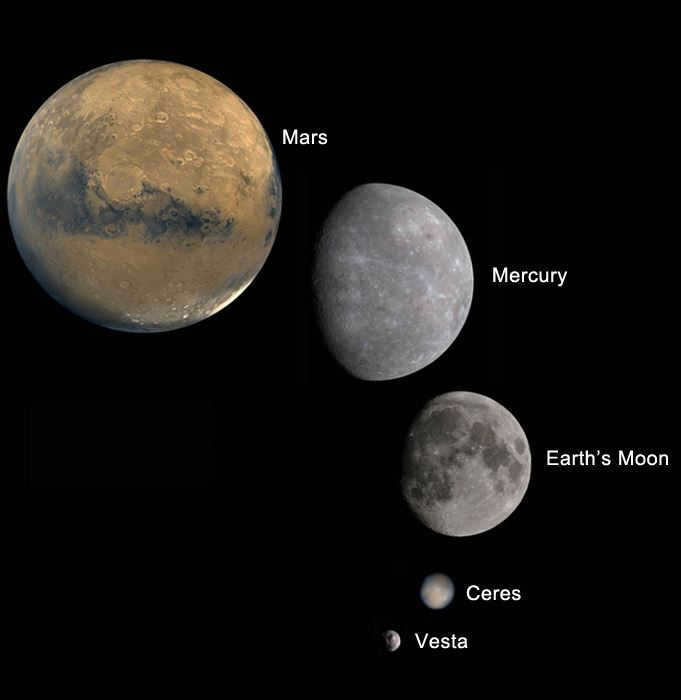
The temperature on the surface of Vesta varies between -190 to -20⁰C, with the possibility of higher temperatures in the past. The dark areas found on the surface are believed to be basaltic plains, formed either through volcanic activity or from collisions with large cosmic objects.
One of the notable features of Vesta is the Reyasylvia crater, which has a diameter of up to 500 km and a depth of 25 thousand km. At the center of this crater, there is the second tallest mountain in the entire solar system, standing at a height of over 22 km.
It is highly probable that the collision with a larger object resulted in the formation of not only the Reyasylvia crater but also numerous smaller fragments that continue to orbit in the asteroid belt and have a composition similar to that of Vesta.
Pallada
Pallada, which was discovered in 1802, is the second largest asteroid in the Main Belt. With a diameter of 512 km and a mass of 2*10 20 kg, it is 20% smaller than Vesta.
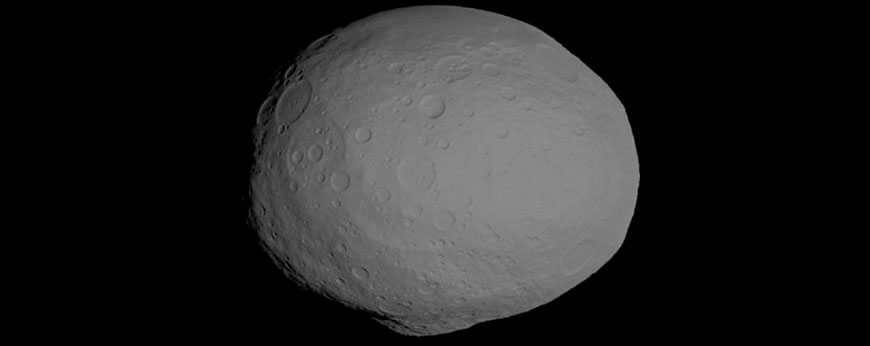

Pallada’s orbit is not only elongated but also inclined at an angle of 35⁰ to the ecliptic plane. This inclination poses challenges for spacecraft trying to reach it. The asteroid completes one revolution in 4.6 Earth years, ranging from 2.1 a.u. at perihelion to 3.4 a.u. at aphelion. Pallada’s surface is covered in numerous craters.
The asteroid consists mainly of silicon, with traces of iron and water. Like Vesta, Pallada is considered one of the surviving protoplanets. Studying such objects is crucial for gaining insights into the formation of our solar system.
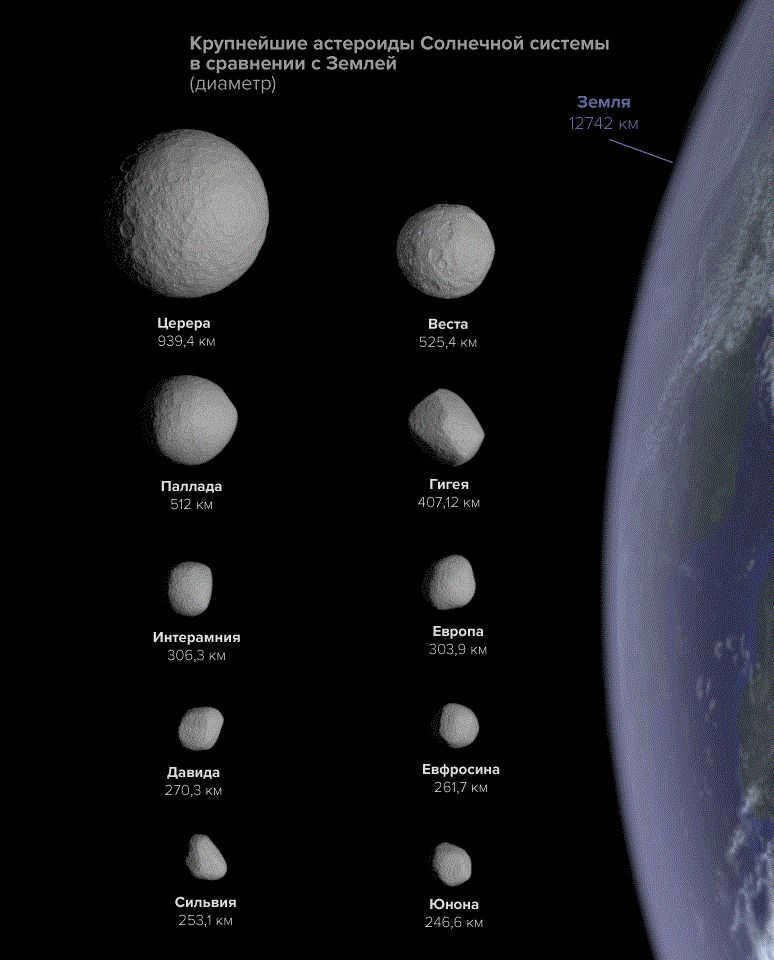
There are certain objects that cannot be observed even with the most advanced telescope. Interamnia is an asteroid of irregular shape, measuring 362*348*310 km in size. Its mass accounts for only 1.2% of all other objects in the asteroid belt.
The surface of this asteroid is exceptionally dark, absorbing up to 93% of the light that reaches it. Interamnia belongs to the F class, which consists of carbonaceous asteroids.
The surface is uniformly colored, indicating that the asteroid has not experienced any collisions or other impacts. It is believed to have a rocky core beneath a thick layer of ice, with the entire outer surface covered in a fine, dark dust.
Interamnia completes a full revolution in 5 years and 4 months. Its distance from the Sun varies between 2.5 and 3.5 astronomical units (a.u.), while intersecting the orbits of Ceres and Pallada. However, the likelihood of a collision between these bodies is considered low.
Sylvia
The asteroid Silvia, with dimensions of 384*262*232, possesses a weight of 1.5*1019 kg, indicating that its mean density surpasses that of water by 20%. This implies that there are empty spaces within the asteroid, which account for approximately 30 to 60% of its overall volume.
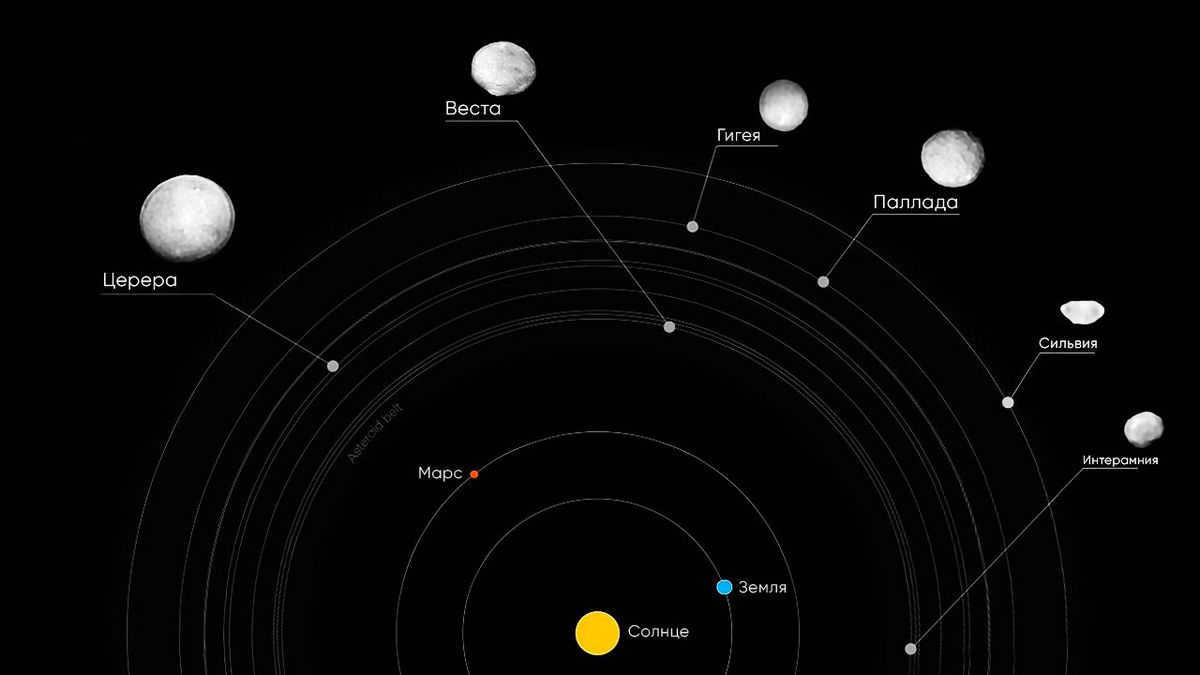
Sylvia revolves around the Sun in a period of 6.5 years. When it reaches its farthest point in its orbit, the distance from the center of the solar system is approximately 3.7 astronomical units.
It is interesting to note that Sylvia is accompanied by two satellites, namely Romulus, which has a diameter of 18 kilometers, and Remus, with a size of 7 kilometers. These satellites may also have voids in their composition. It is possible that Sylvia has additional smaller companions.
A summary of other objects discovered in the first half of the 19th century is provided in the table. All of these objects are considerably smaller than Ceres, with the largest among them being Hygeia.
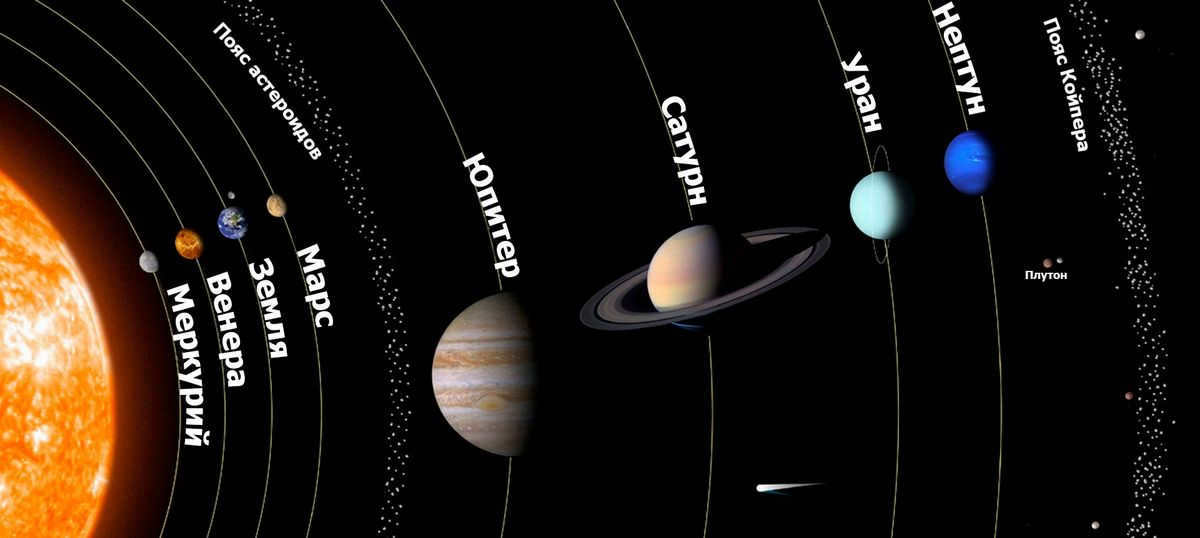
| Name | Year of discovery | Diameter |
| Juno | 1804 | 233 km |
| Astrea | 1845 | 124 km |
| Irida | 1847 | 199 km |
| Geba | 1847 | 185 km |
| Flora | 1847 | 147 km |
| Metida | 1848 | 190km |
| Hygeia | 1849 | 407km |
There are around 300,000 asteroids in the Main Belt, which vary in size from 100 meters to 525 kilometers. However, there is one exception – Ceres, which has a diameter of 950 kilometers. Additionally, there are millions of smaller objects that also orbit within the belt.
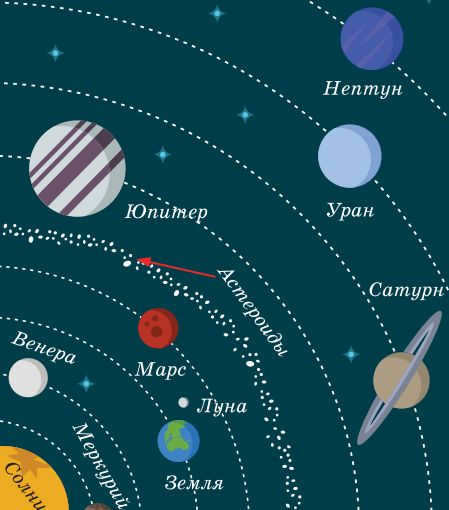

Asteroids are categorized into different classes based on their ability to reflect sunlight.
The majority of asteroids fall into one of three classes:
Only a small percentage belong to other, less common classes. In general, rocky asteroids are found closer to the Sun, while carbonaceous asteroids are located farther away.
Groups of asteroids with similar orbits and compositions were likely larger celestial bodies. The gravitational influence of Jupiter caused their orbits to become chaotic, leading to collisions and the destruction of these objects. Based on their similar composition, they can be classified as members of the same family.
Aside from asteroids, there is a significant quantity of interstellar dust that revolves in orbit. Dust from asteroids, which is created through collisions of celestial bodies, migrates towards the Sun. This cosmic dust, in conjunction with the remnants of comets, descends into the zodiacal light, a phenomenon that can be easily observed near the equator during sunset and before sunrise.
Investigation
Exploring asteroids holds significance not just in terms of scientific inquiry. The presence of valuable metals and other materials in these celestial bodies can serve as a valuable resource for various practical applications and technological endeavors.
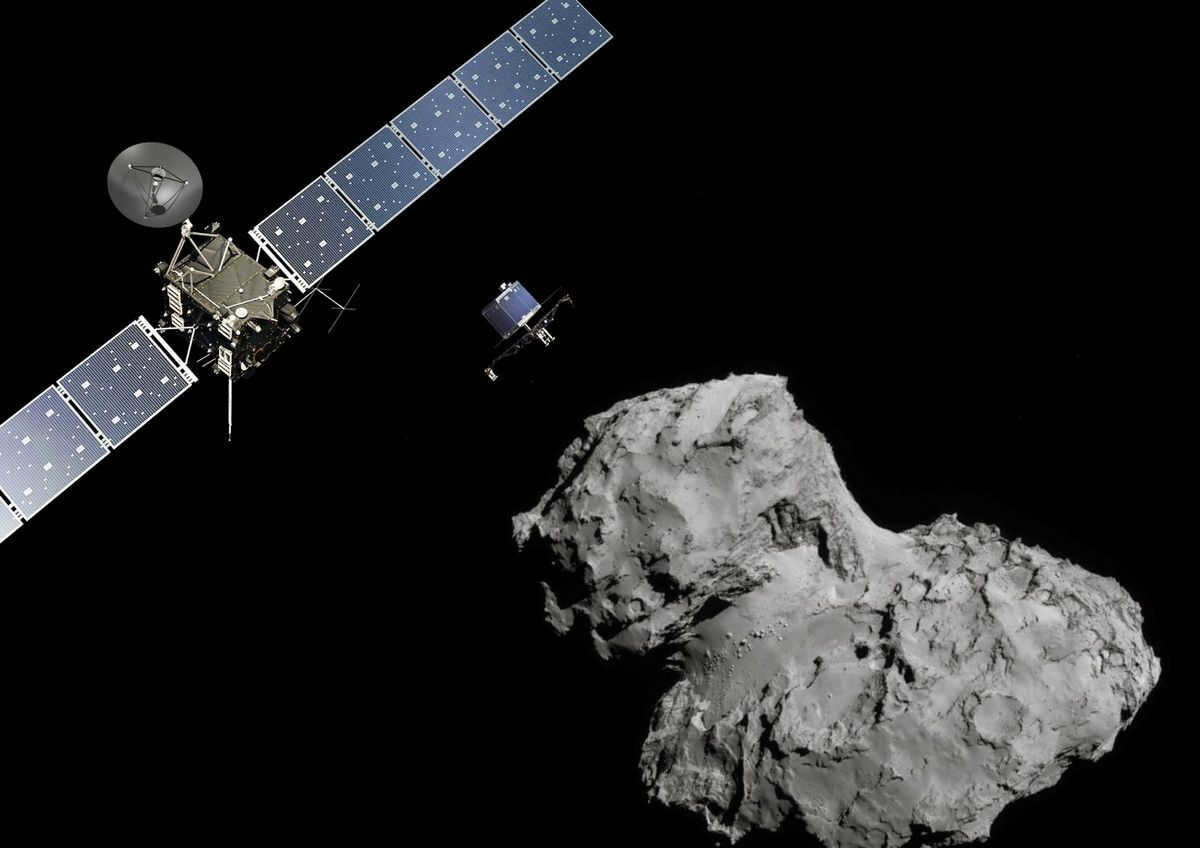
Exploration of the main belt is currently underway with interplanetary space probes. From 2011 to 2016, the DAWN spacecraft conducted a thorough investigation of Ceres and Vesta. More recently, the LUCY probe was successfully launched from Earth. In the year 2025, it is expected to have a close encounter with an object in the belt known as Donald Johanson, and transmit detailed images of its surface back to Earth.
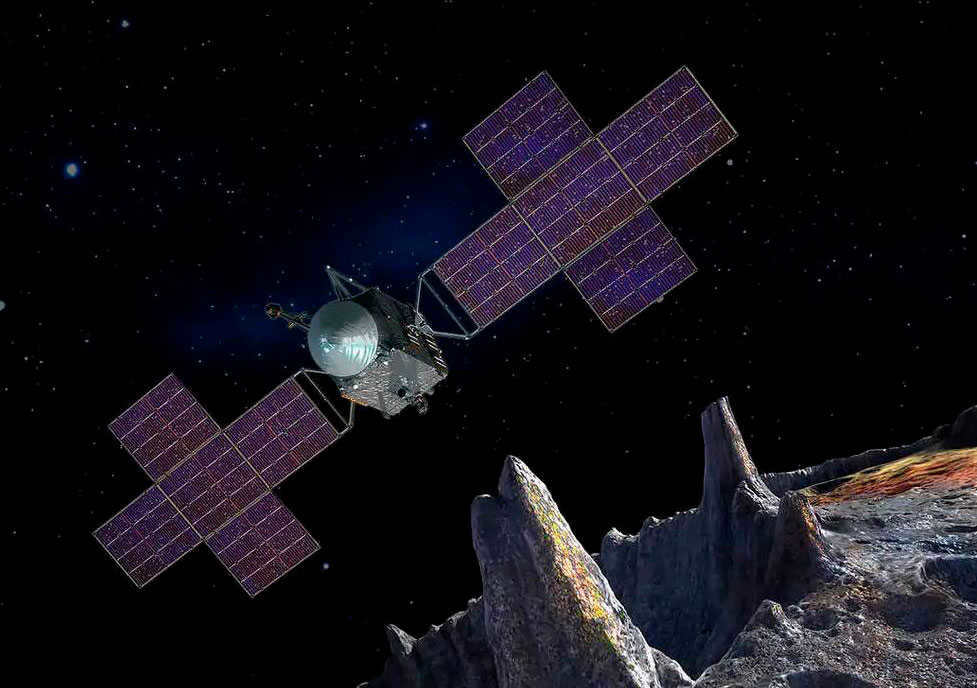
The orbit of the asteroid belt has been crossed by various spacecraft, including Voyager 1, Pioneer 10 and Pioneer 11, Galileo, Ulysses, Rosetta, NEAR Shoemaker, New Horizons, and Cassini-Huygens.
Despite being small in size, asteroids hold significant scientific and practical value. Some of them have been preserved since the early stages of the solar system’s formation. The study of asteroids contributes to our understanding of the formation of planets and other celestial bodies.
Answers to Questions
Kuiper Belt asteroids can be found beyond Neptune’s orbit, which is 30-50 a.u. away from the Sun.
This occurrence is extremely rare and happens approximately once every 100,000 years.
Has any research probe ever been struck by an asteroid while crossing the Main Belt?
No, there is no information available regarding such incidents.
Calculations and data from probes, along with photos that aid in the discovery of new celestial bodies, are used to determine this.
It is believed that the asteroid with the longest orbit around the Sun in the Main Belt takes approximately 6 Earth years to complete one revolution.
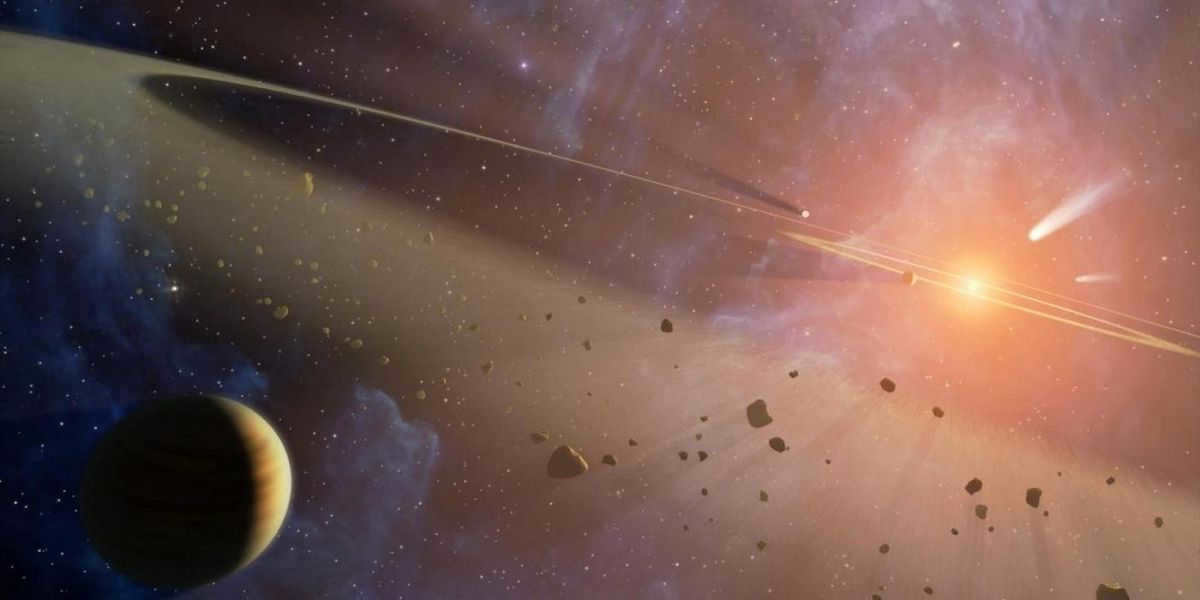
It is a common occurrence to hear about meteorites or asteroids that have collided or are going to collide with Earth. However, the origin of these celestial objects and their total number remain a mystery to many. The majority of these bodies can be found in a circular formation around the Sun, known as the main belt or asteroid belt.
Surprisingly, the number of asteroids in our solar system far exceeds the number of planets. Researchers are constantly discovering several thousand new asteroids each year!
The asteroid belt, situated between the planets Mars and Jupiter, is home to billions of asteroids ranging in size. The largest asteroids can reach up to 1000 kilometers in diameter, whereas the smallest resemble tiny pebbles.
These rocky formations display a wide range of shapes, with the largest being spherical and the smallest irregular. They are primarily composed of nickel, iron, or silicates.
Scientists used to hold the belief that the asteroid belt was the remains of a former planet that had exploded under mysterious circumstances. However, it is now widely accepted that the gravitational influence of Jupiter disrupted the process of planetary formation, preventing the rocks from coalescing into a single celestial body.
The initial sighting of the inaugural asteroids
In the early 1800s, the inaugural asteroids were spotted for the first time. As space photography emerged, the count of findings escalated during the latter part of the 1800s.
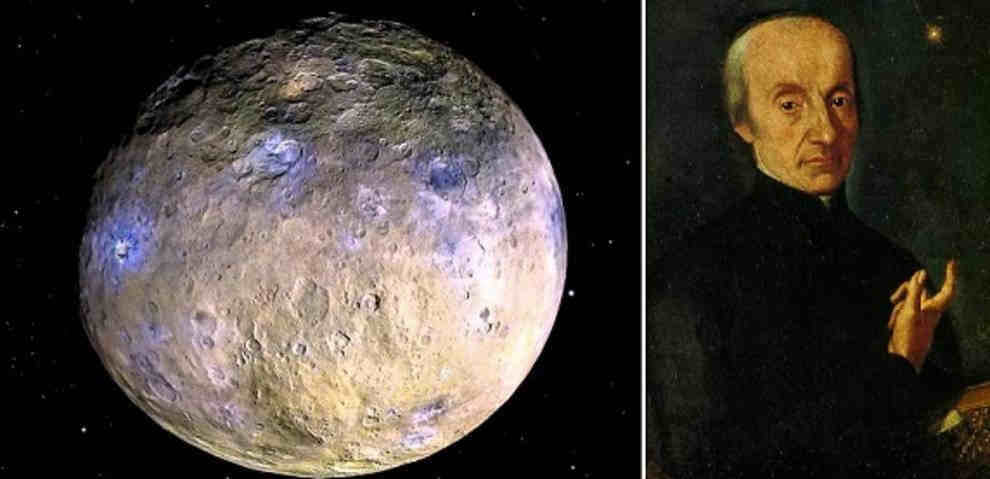
In the year 1801, Giuseppe Piazzi, who at the time was the director of the Palermo Observatory located in Sicily, made the groundbreaking discovery of the very first asteroid, which was named Ceres after the Roman goddess who presided over agriculture. Ceres is currently recognized as the largest asteroid within the main asteroid belt. Measuring approximately 1000 kilometers in diameter, Ceres holds the distinction of being classified as a dwarf planet, a unique designation among its fellow asteroids.
By the year 1807, astronomers had gone on to successfully identify three additional significant asteroids: Pallas, Juno, and Vesta. Then, in the year 1845, the discovery of another asteroid named Astrea was recorded. Thanks to the substantial increase in astronomical observations that have taken place since that time, hundreds of thousands of other asteroids have been detected!
Origin of the primary asteroid belt
There is a current hypothesis suggesting that the primary asteroid belt originated from primordial material within the solar system that failed to coalesce into a planet.
Previously, scientists believed that this assemblage of rocks was the result of the destruction of an ancient planet (known as Phaeton) located between Mars and Jupiter. However, this hypothesis has since been discarded due to several reasons, the primary one being that the total mass of the belt is significantly smaller than that of our Moon, making it unlikely to be the remnants of a former planet. It is important to note that the formation of the asteroid belt was influenced by gravitational disruptions caused by Jupiter.
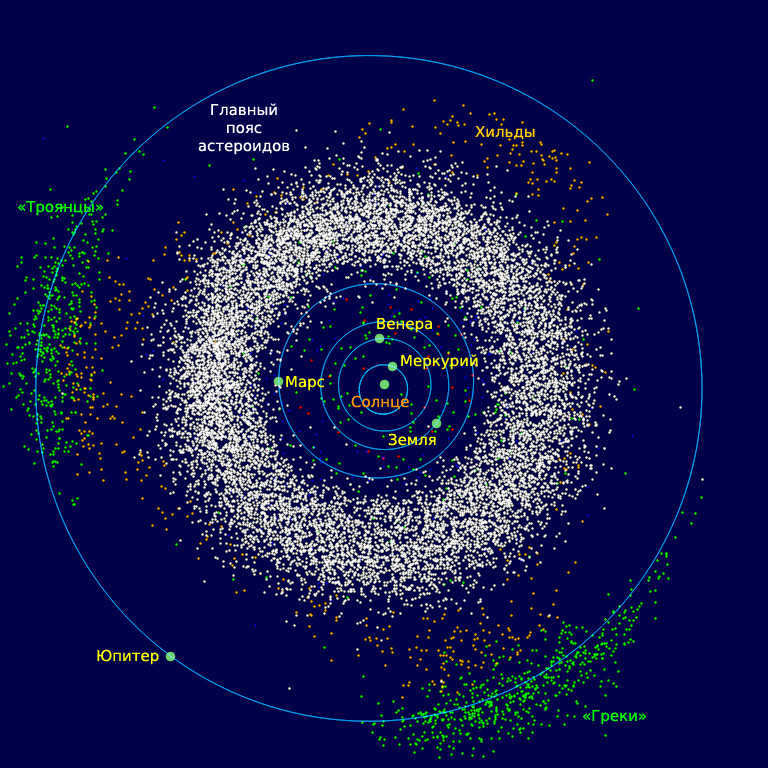
A group of twelve asteroids with a fairly significant size, measuring about 250 kilometers in diameter, have been detected. The initial asteroid that was not part of the main asteroid belt was found in 1898. It is named (433) Eros and its orbit around the Sun is highly elliptical, crossing the orbit of Mars. Apollo, which was discovered in 1932, was the first asteroid to cross Earth’s orbit. Currently, there are several hundred similar objects known to intersect with Earth’s orbit. It is believed that they originate from the asteroid belt and have experienced recent deflections, within the last 100 million years in astronomical terms.
Collisions among asteroids
Contrary to the beliefs portrayed in many science fiction movies, traversing the asteroid belt in a spacecraft would not pose significant dangers, as the risk of colliding with an asteroid is minimal. Although collisions among asteroids do occur frequently on a cosmic scale (approximately one collision between two large asteroids every 100,000 years), they are relatively rare on our scale!
It is important to note that the space between each asteroid in the main belt is vast: in the densest regions, the distance between two asteroids is approximately 5 million kilometers (15 times the distance between the Earth and the Moon). Numerous probes have successfully navigated through the asteroid belt, including Voyager 1 and 2, Pioneer 10 and 11, Galileo, Cassini-Huygens, NEAR Shoemaker, Ulysses, and New Horizons. None of these probes have encountered a collision with an asteroid!
Could Asteroids be the Future of Human Transportation?
Did you know that NASA experts are currently researching the feasibility of capturing and towing an asteroid under 10 meters in length (to avoid any potential damage upon collision with Earth) and placing it in orbit around the Moon?
NASA is actively considering the possibility of sending humans to Mars starting in the 2020s and is exploring various transportation methods to achieve this goal. In the coming years, they plan to launch a robotic spacecraft with the ability to capture and transport an asteroid to us.
Furthermore, there are plans to send humans to explore the asteroid by approximately 2025. Having an asteroid in lunar orbit could serve as a fuel storage facility and even a launch site for Mars missions, offering a much simpler and cost-effective alternative to launching spacecraft from Earth.
Moreover, NASA is of the opinion that extracting resources from asteroids has the potential to facilitate the production of breathable air, drinking water, and fuel using oxygen and hydrogen. The capability to exploit extraterrestrial resources presents a significant hurdle for humanity.
By successfully capturing an asteroid, altering its course, and placing it in orbit around the Moon, we will possess the necessary tools to effectively devise strategies to avert asteroid collisions with Earth.
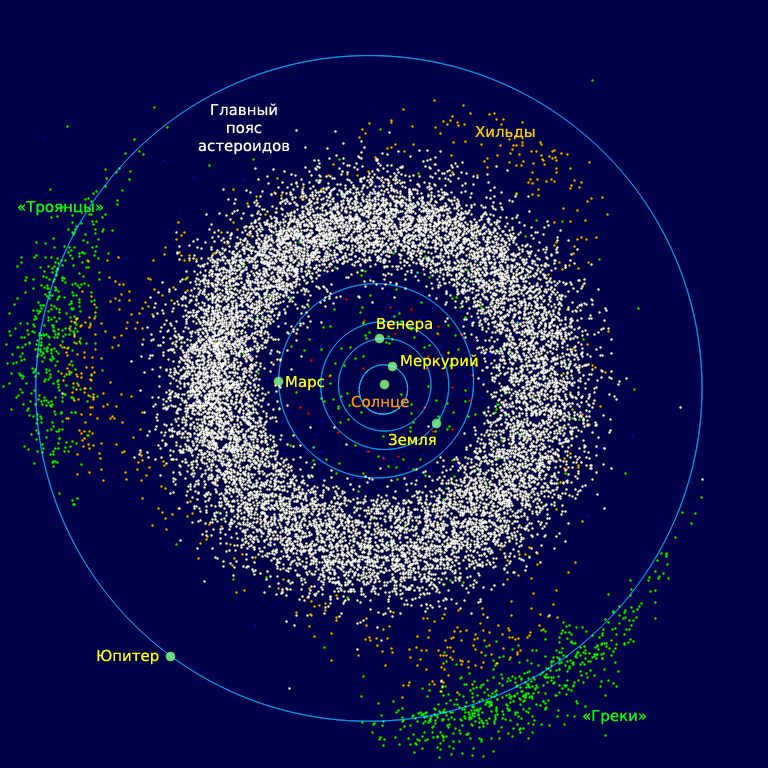
The region of space located between the orbits of Mars and Jupiter, known as the Main Asteroid Belt, is filled with numerous asteroids of various sizes. This area is visually represented by white dots in the provided illustration.
Situated between the orbits of Mars and Jupiter, the asteroid belt consists of a collection of asteroids that have their own individual orbits around the Sun. These asteroids are spaced far apart from one another, and over the course of billions of years, their orbits have become more stable, resulting in infrequent collisions. However, it is believed that collisions do occur occasionally due to the gravitational influence of Jupiter. Without Jupiter’s gravitational pull, it is likely that these asteroid fragments would have coalesced into a single planetary body long ago.
"Main" is the name given to this asteroid belt because it has been under study for a considerable amount of time.
As its name suggests, there is another asteroid belt in the solar system known as the Kuiper Belt. In the diagram, you can observe other clusters of asteroids – the "Trojans", "Greeks", and "Hildas", which are highlighted in green and orange. However, we will not focus on them at the moment.
Based on the Titius-Bode rule, a planet should have existed at a distance of approximately 2.8 a.u. from the Sun. This planet, known as Ceres, was eventually discovered, along with Pallada. Unfortunately, these planets were deemed too small.
Later on, smaller asteroids were found in what is now known as the Main Asteroid Belt, which is located between orbits 2.2-3.6 a.u. It was believed in the 19th century that these asteroids were the remnants of the ill-fated planet Phaeton, which was either destroyed by a comet collision or torn apart by Jupiter’s gravity.
As astronomical technology advanced, it became evident that the asteroid belt between Mars and Jupiter is home to tens, if not hundreds of thousands of small fragments (approximately 300,000 have been discovered to date).
However, calculations indicate that the influence of Jupiter is insufficient to obliterate an entire planet.
Nevertheless, these same calculations demonstrate that its gravitational pull is strong enough to impart significant orbital velocities to asteroids. This surplus of energy causes the asteroids to collide at high velocities and disintegrate, preventing them from coalescing smoothly.
During the early days of space exploration, there were concerns that spacecraft might sustain damage while traversing the asteroid belt.
As it turns out, the debris in the Main Asteroid Belt is rather sparsely distributed. Approximately a dozen vehicles have already passed through it, yet no asteroid collisions have occurred thus far.
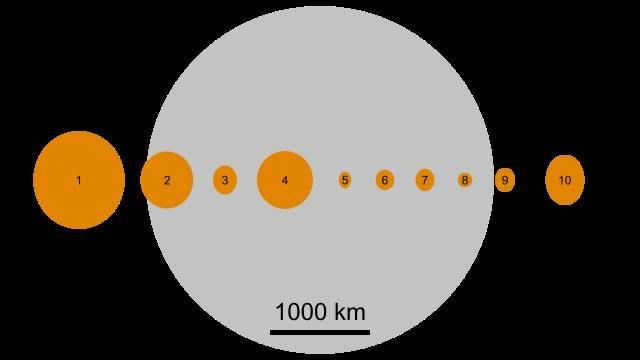
The combined mass of all the objects in the asteroid belt amounts to only 4% of the mass of the Moon. The four largest asteroids, namely Ceres, Pallada, Vesta, and Hygeia, account for more than half of this total mass. Ceres alone contributes 32% of the total mass of the main asteroid belt.
Here is a comparison of the sizes of the first ten asteroids in relation to the Moon:
In the order of their discovery: 1 – Ceres, 2 – Pallada, 3 – Juno, 4 – Vesta, 5 – Astrea, 6 – Geba, 7 – Iris, 8 – Flora, 9 – Metis, 10 – Hygeia.
Kirkwood Gap
The distribution of asteroids in the Main Belt is not uniform. There exist regions known as “Kirkwood gaps” where the number of asteroids is significantly lower. The origin of these gaps is an intriguing phenomenon.
While orbiting the Sun, the Main Belt asteroids can fall into a state of orbital resonance with Jupiter, which revolves around our star. As a consequence, the gravitational pull of Jupiter affects the asteroids periodically. In other words, Jupiter gently perturbs the asteroids, causing disturbances in their orbits. Although the influence of Jupiter is relatively weak, it accumulates over time. Consequently, the asteroids either collide with neighboring asteroids and change their trajectory or get ejected from the solar system by Jupiter’s gravitational force. This leads to the creation of empty regions in the asteroid belt, known as Kirkwood gaps.
The most well-known gaps in the Kirkwood region occur at the following orbital distances:
2.06 a.e. (resonance of 4:1)
2.5 a.e. (resonance of 3:1)
2.82 a.e. (resonance of 5:2)
2.95 a.e. (resonance of 7:3)
3.27 a.e. (resonance of 2:1)
Similar to the Kirkwood gaps, there are also empty regions in Saturn’s rings known as the Cassini, Huygens, and Laplace gaps. These gaps are caused by the orbital resonance of particles with Saturn’s satellites.
Exploring the region between Mars and Jupiter known as the asteroid belt
So far, only three spacecraft have been dispatched to specifically study the objects within the Main Asteroid Belt:
The “NEAR Shoemaker” mission investigated asteroids (433) Eros and Matilda[23] from 1997 to 2001, respectively.
The Japanese spacecraft Hayabusa successfully landed on asteroid (25143) Itokawa and returned samples of its soil to Earth on June 13, 2010.
The Dawn spacecraft examined Vesta in 2011 and has been studying Ceres since 2015.
In addition to these missions, the objects within the main asteroid belt have also been studied by “transit” spacecraft that were sent to more distant regions of the solar system, such as Jupiter and Saturn.
Other objects in the Main Belt of asteroids, which have a high level of brightness, are seldom visible to the naked eye. However, during specific events, such as Confrontations when the Earth is positioned between them and the Sun, they can be observed. This is the case with the four asteroids mentioned above. Even during these events, a telescope is required to view them since they are relatively small and appear as faint stars.
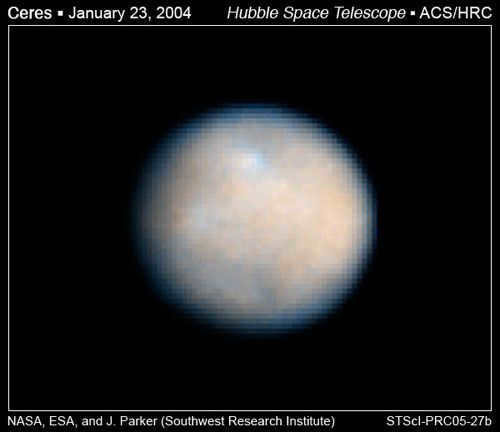
This image of Ceres, captured by the Hubble telescope, serves as a prime example:
While this instrument may catch one’s eye, its capabilities seem limited.
As previously mentioned, the easiest time to observe the desired asteroid is during opposition, when it is positioned between the Sun and Earth. During this time, the asteroid is closest to Earth and its illuminated surface is at its largest. Astronomical tables designed for this purpose are available.
Indeed, the observations of Main Belt asteroids may not be particularly remarkable. However, for amateur astronomers with unrealized scientific aspirations and a surplus of patience, this is the perfect opportunity to shine. Because there is something truly special about seeing a distant asteroid with your own eyes, being able to confidently identify it, and building a collection of observed asteroids. It’s not just a hobby, but also a source of unparalleled satisfaction derived from challenging observations.
In this pursuit, you can temporarily forget about the current century and transport yourself back to the 1950s, where you can experience the indescribable feeling of a pioneer and embrace the romance of the early days of space exploration. During this time, it’s just you, your telescope, and a world waiting to be discovered.
Admittedly, observing the Main Asteroid Belt is not for the faint of heart in the field of astronomy.
But, as the saying goes, to each their own.
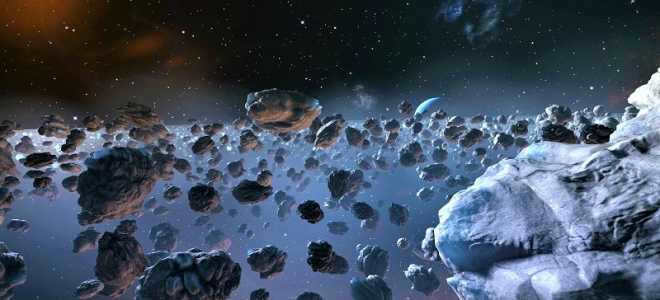
Contrary to other regions of the solar system, the asteroid belt serves as a central hub for a wide variety of asteroids and dwarf planets. Through extensive scientific investigation, researchers have postulated that these celestial bodies emerged during the initial formation of the solar system.
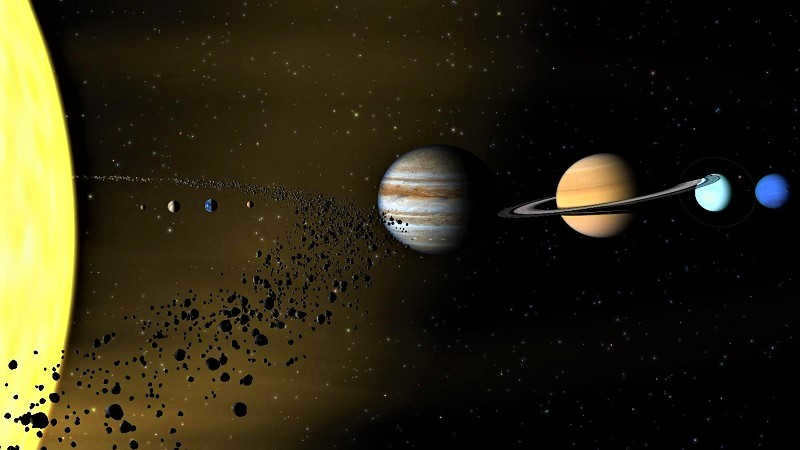
Interesting facts about the asteroid belt
- The main asteroid belt is a unique area that distinguishes it from other similar regions.
- Furthermore, significant formations within the belt are often named after characters from ancient Roman mythology.
- All objects within the belt orbit the Sun, following a similar path to the planets. However, their orbits have distinct characteristics, including elongation and larger eccentricities, which are primarily influenced by the gravitational force of Jupiter.
- Moreover, the asteroids vary in size, ranging from a few tens of meters to thousands of kilometers in diameter. It is worth noting that the number of large asteroids is relatively small.
- Moreover, when combined, the total mass of the main belt amounts to roughly 4% of the Moon’s mass. Additionally, four celestial bodies, namely Ceres (which accounts for 1/3 of the total mass), Vesta, Palladus, and Hygeia, make up half of this mass.
- Furthermore, the region is abundant in fine cosmic dust, which is created through collisions between various bodies. Interestingly, the zodiacal light is formed by a mixture of dust particles from asteroids and comets.
Zodiacal light refers to a faint celestial glow that can be observed in the zodiacal constellations and is located within the ecliptic plane, hence its name.
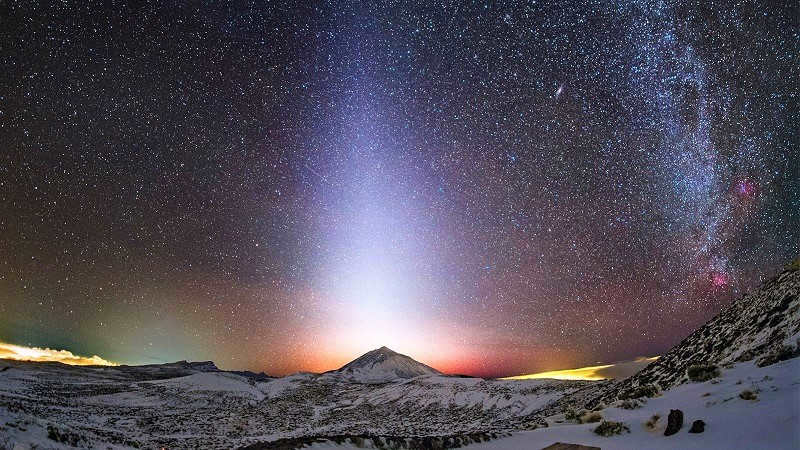
Position of the asteroid belt
It is worth mentioning that the primary asteroid belt can be found situated between the orbits of Mars and Jupiter. Specifically, it is positioned at a distance of 2.2-3.2 astronomical units from the Sun, with an estimated length of one astronomical unit, or approximately 149,598,100+/-750 km.
The area between Mars and Jupiter is where asteroids are most densely concentrated.
Chemical composition
It is well established that every interstellar asteroid possesses a unique spectrum, which ultimately determines its composition.
Indeed, there are three primary spectral classifications:
The distinctions between each of these classes are evident. For instance, class C (which accounts for 75% of all asteroids) primarily consists of basic carbon compounds, while class M is characterized by a higher concentration of diverse metals, and so forth.
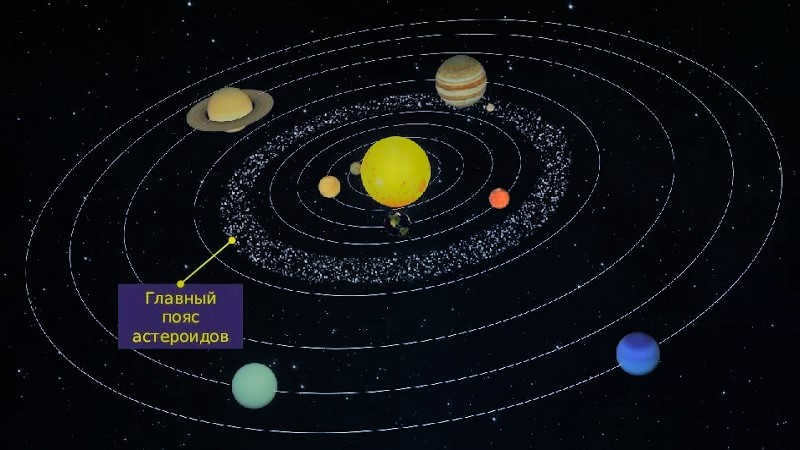
However, the makeup and temperature of asteroidal objects vary depending on their proximity to the Sun, as well as their reflectivity. Consequently, the ones closest to the star consist mainly of dry silicate materials. On the other hand, the carbon-based ones are situated at much greater distances.
In general, the closer an asteroid is to the Sun, the hotter it becomes. It is important to mention that due to rotation, there is a discrepancy in temperature between the sunlit side and the dark side.
How many asteroids are there in the asteroid belt?
There are already over 300,000 asteroids that have been discovered in the asteroid belt, but in reality, there are several million more.
Due to the vast expanse of the area, the density of the asteroid distribution is quite low. This means that the asteroids are spread out at significant distances from each other.
Astronomers believe that there are even more asteroids in the asteroid belt than what is currently known. Many of these asteroids may be very small and are considered to be remnants from the formation of the solar system. The search for these cosmic objects is now automated with the help of modern systems and instruments.
However, there is a particular focus on identifying potentially dangerous asteroids that could pose a threat to Earth. These are known as near-Earth asteroids, as they come closer to our planet.
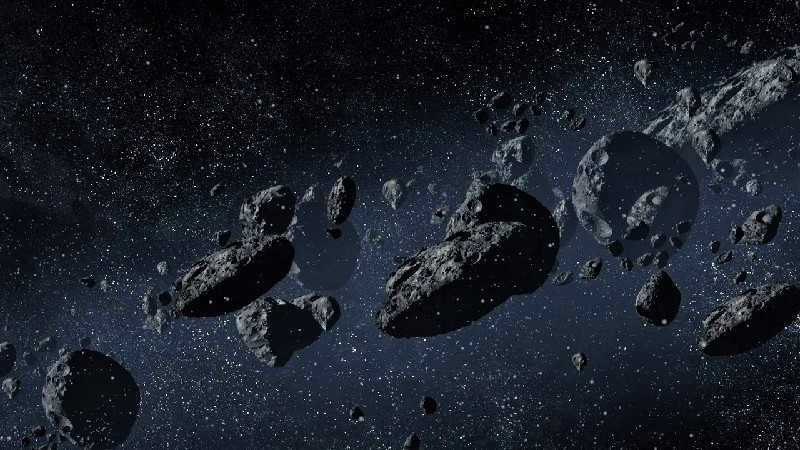
Theories on the Origin of the Asteroid Belt
Naturally, the presence of numerous similar objects in a relatively small area raises questions about their origin. How and why did they come into existence, and what is the force that keeps them in place?
In the 19th century, the prevailing theory on the origin of the asteroid belt suggested that it was composed of the remnants of a hypothetical planet called Phaeton. It was believed that Phaeton once existed between the orbits of Mars and Jupiter, but was destroyed in a collision with a comet.
However, there is no confirmation of this hypothesis. Nevertheless, there are numerous inconsistencies within it. For instance, the diverse chemical composition of asteroids suggests that they originated from distinct celestial bodies. Furthermore, a substantial amount of energy would be required for their destruction, which would not be attainable through the impact of even an exceedingly large comet.
In all likelihood, the main belt can be categorized as a failed planet. In other words, due to the gravitational forces exerted by Jupiter, the particles were unable to coalesce into a singular entity. Consequently, a multitude of objects with varying compositions and sizes came into existence.
It is widely believed that the asteroid field comprises a cluster of protoplanetary matter.
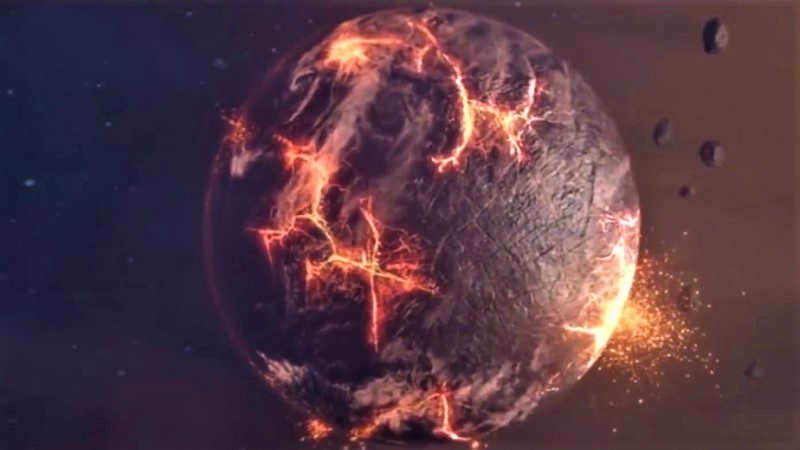
The primary theory behind the formation of the asteroid belt is that it originated in close proximity to Jupiter. As a result, the gravitational force of the planet continuously influences the orbits of the asteroids. Additionally, the powerful energy emanating from Jupiter leads to frequent collisions among the asteroids. However, these collisions prevent the formation of a protoplanet or other celestial bodies, causing the asteroids to disintegrate into smaller fragments.
Researchers propose that the majority of planetesimals shattered into numerous pieces following these collisions. Many of these fragments were propelled beyond the confines of the solar system, resulting in the asteroid field having a relatively low density. Meanwhile, the remaining fragments began to traverse elongated orbits.
Furthermore, these collisions gave rise to families and groups of asteroids. These associations consist of bodies that share similar orbits and composition.

